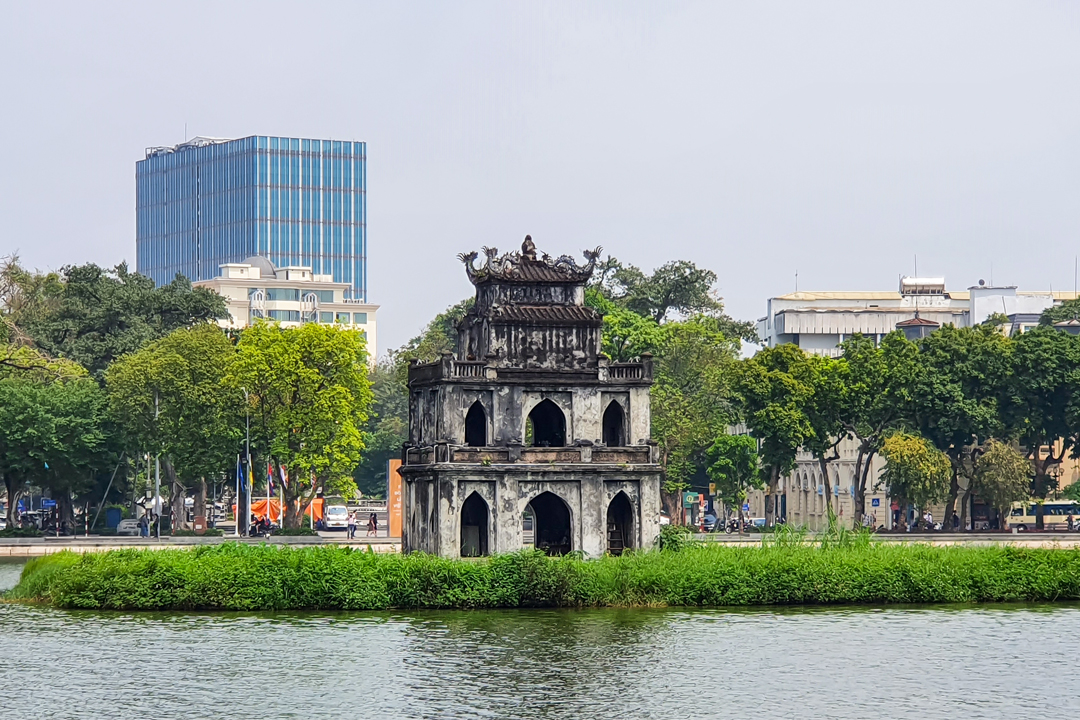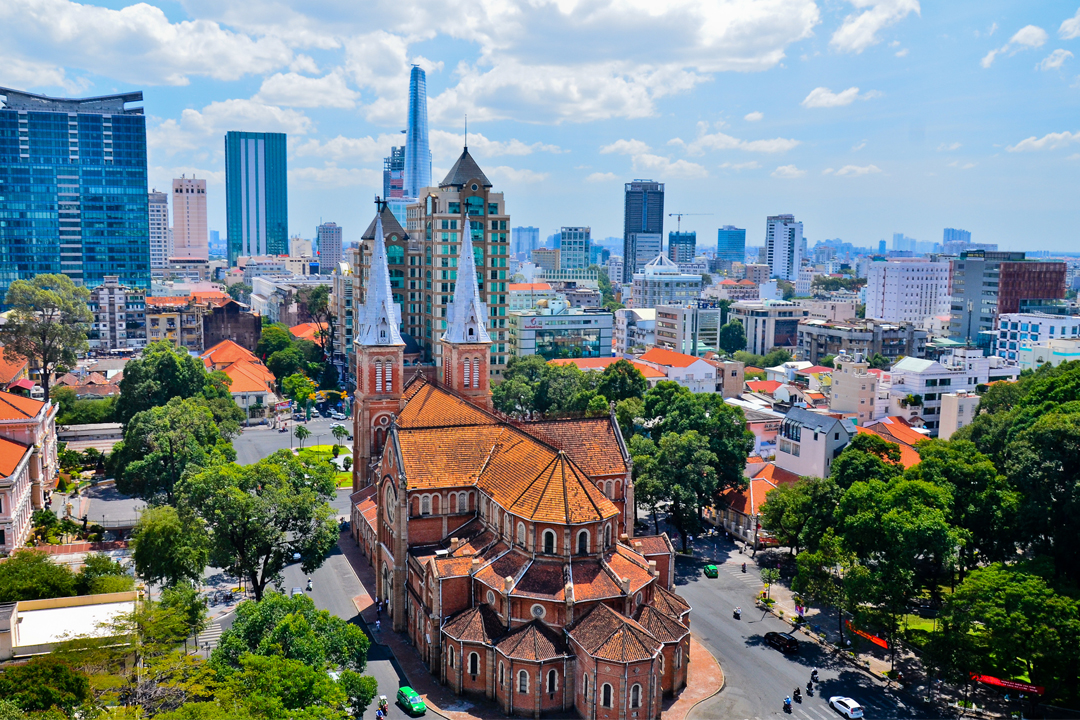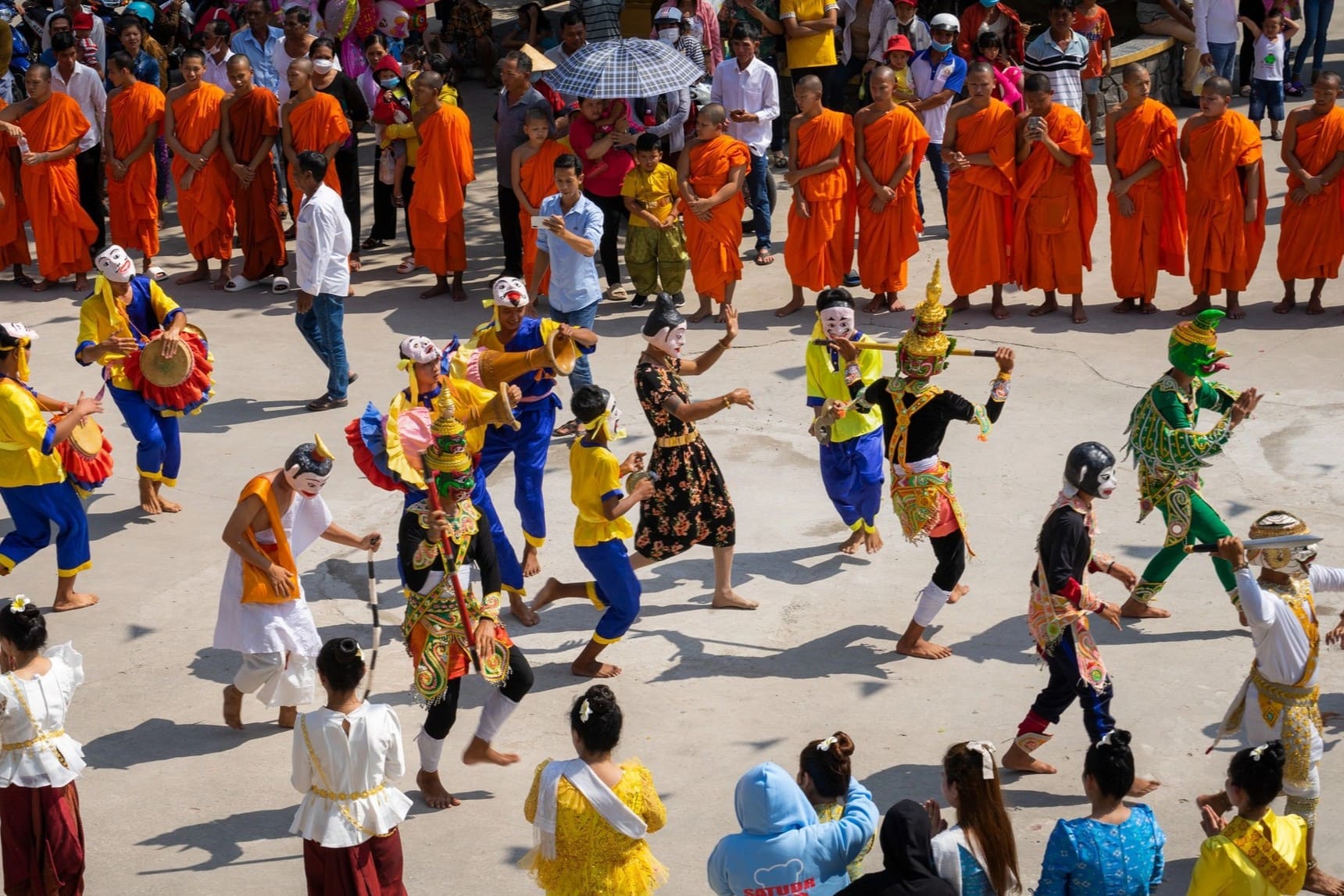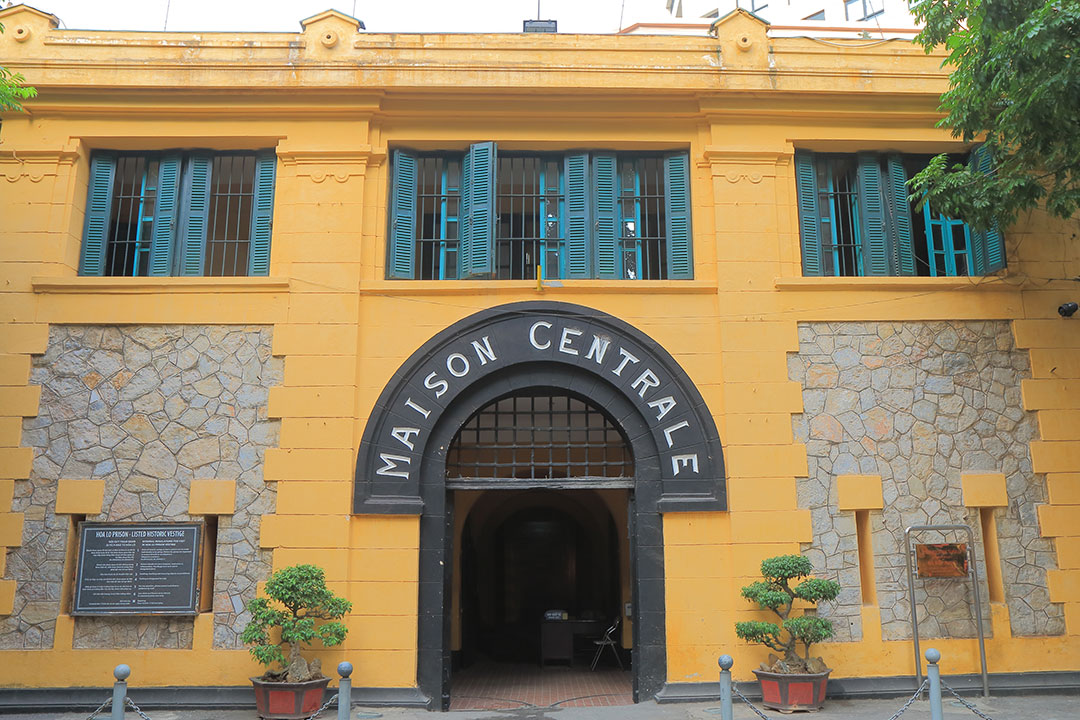Hoa Lo Prison: History, Architecture, Things to See & Travel Guide
Hoa Lo Prison, often called the “Hanoi Hilton”, stands as a silent witness to Vietnam's tumultuous history, embodying tales of colonial oppression, wartime struggles, and national resilience. Built by the French in the late 19th century to hold Vietnamese revolutionaries, it later housed American POWs, symbolizing defiance and endurance. Unlike typical travel guides, this exploration of GTrip delves deep into the prison's complex layers, from the haunting stories of inmates to the preserved artifacts that reveal untold truths. As you step inside this historical landmark, you'll understand the past and also grasp its enduring impact on Vietnam’s cultural memory.
Overview of Hoa Lo Prison
Address: No. 1 Hoa Lo Street, Hoan Kiem Ward, Hanoi
Hoa Lo Prison serves as a compelling symbol of Vietnam's tumultuous past. Originally constructed by the French colonial government in 1896, the prison was intended to detain political prisoners who opposed colonial rule. Over the decades, it became infamous for its severe conditions and the harsh treatment of Vietnamese revolutionaries. During the Vietnam War, Hoa Lo Prison gained notoriety among American prisoners of war, who nicknamed it the “Hanoi Hilton”. Today, the prison operates as a museum, offering tourists a sobering glimpse into the endurance and sacrifices of those who were imprisoned there. Walking through its preserved cells and exhibits, you can explore Vietnam’s struggle for independence, the resilience of its people, and the complexities of its wartime history. The site remains a poignant reminder of the country's journey through hardship toward sovereignty and serves as an educational experience for both locals and international travelers.
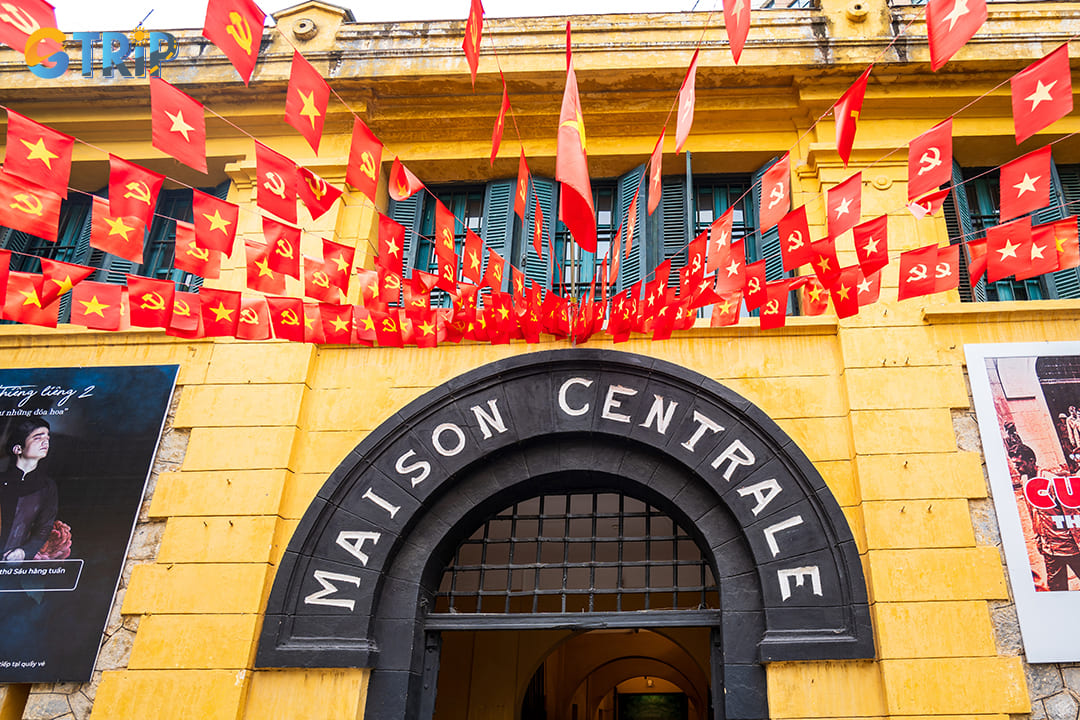
Hoa Lo Prison serves as a compelling symbol of Vietnam's tumultuous past
History of Hoa Lo Prison
Hoa Lo Prison is a historic site in Hanoi that reveals the harsh realities of colonial rule and the resilience of those who fought for Vietnam’s independence.
Origins in the French colonial era
Hoa Lo Prison, known initially as Maison Centrale, was established by French colonial authorities in the late 19th century, around 1896. Its construction marked a strategic move by the French to suppress Vietnamese resistance and maintain control over the colony. Positioned in the heart of Hanoi, Hoa Lo Prison was part of a broader system designed to subdue and isolate political dissidents advocating for independence.
The prison's original design could house approximately 450 prisoners. However, at its peak, it detained over 2,000 individuals, leading to overcrowded and inhumane conditions. Political prisoners, including revolutionaries like Phan Boi Chau and Hoang Van Thu, were subjected to harsh interrogations, torture, and forced labor. The facility's nickname, “Maison Centrale”, reflected its dual purpose: a place of punishment and a symbolic reminder of the French colonial power.
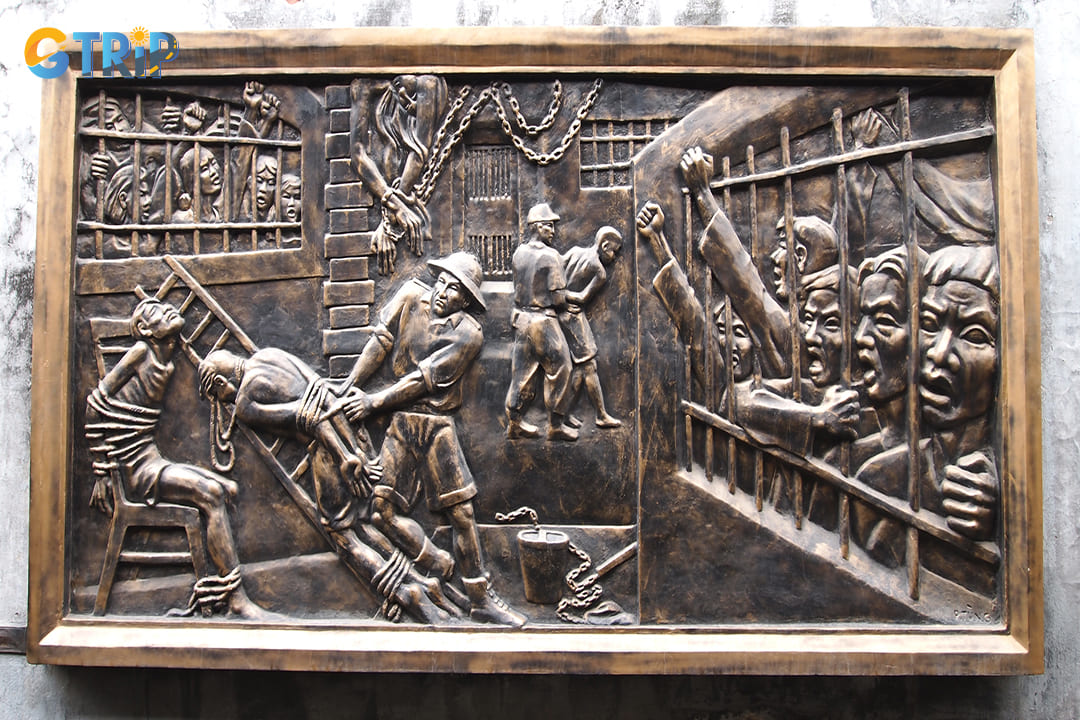
This is a place of punishment and a symbolic reminder of the French colonial power
Role during the Vietnam War
During the Vietnam War, Hoa Lo Prison gained notoriety as a detention center for American prisoners of war (POWs). The most famous of these POWs was John McCain, a U.S. Navy pilot and future U.S. Senator, whose plane was shot down over Hanoi in 1967. American captives mockingly dubbed the prison the “Hanoi Hilton”, a dark irony highlighting the grim conditions they endured.
Prisoners faced severe living conditions, including inadequate food, poor sanitation, and psychological and physical abuse. While North Vietnamese authorities claimed to treat POWs according to the Geneva Conventions, testimonies from former detainees often recount experiences of isolation, interrogation, and maltreatment.
Despite these hardships, POWs established a covert system of communication, developing a sense of camaraderie that became essential for their mental survival. The legacy of Hoa Lo during this period remains a contentious aspect of historical discourse, symbolizing the complex dynamics of war, propaganda, and memory.
Transformation into a museum
Following Vietnam’s reunification in 1975, Hoa Lo Prison continued to operate as a detention center for a short period before its partial demolition in the 1990s. In 1993, the Vietnamese government preserved part of the prison as a museum to share Vietnam's colonial and wartime history.
Today, the museum houses exhibitions detailing the harsh realities of French colonial rule, the resilience of Vietnamese revolutionaries, and the experiences of American POWs during the Vietnam War. Artifacts include shackles, photographs, letters, and personal items from prisoners, serving as sobering reminders of the struggles endured within its walls. Hoa Lo Prison's evolution from a symbol of colonial oppression to a site of historical reflection captures the complex narrative of Vietnam's fight for independence and reconciliation. Its preservation as a museum ensures that future generations understand the profound struggles and resilience that shaped the nation's modern identity.
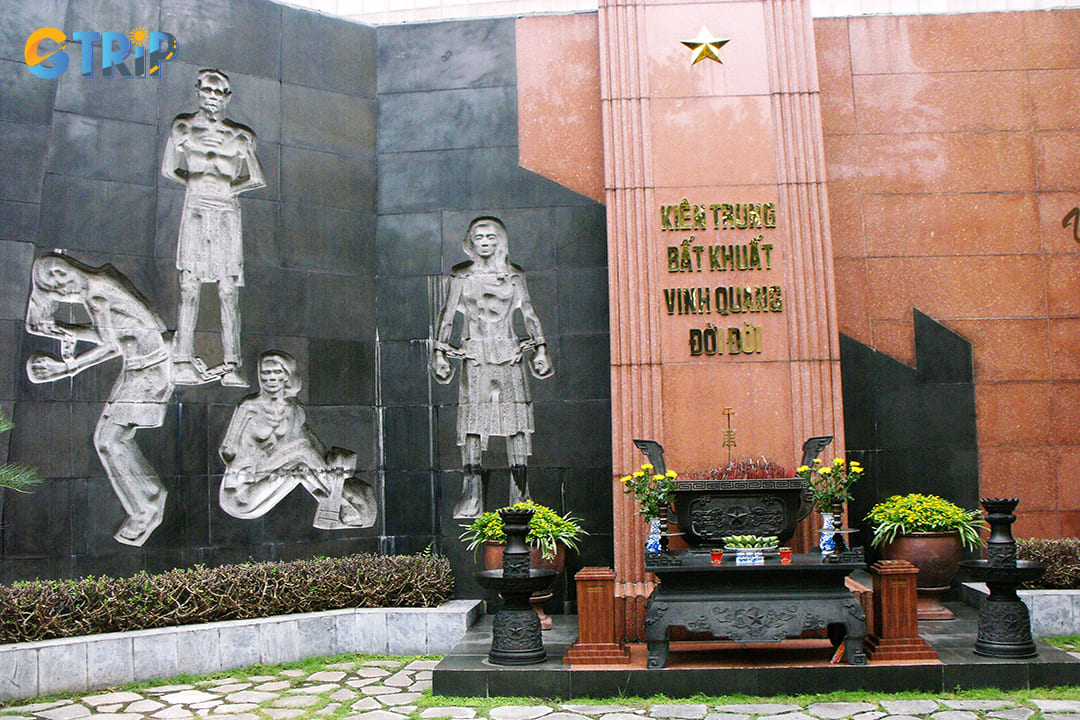
Hoa Lo Prison's shift from colonial oppression to historical reflection embodies Vietnam's journey toward independence and reconciliation
Architecture of Hoa Lo Prison
Hoa Lo Prison's architecture was a calculated blend of function and intimidation, reflecting the harsh colonial rule under which it was constructed. Hoa Lo Prison used to be 12,908 square meters in size, with a construction area of around 10,000 square meters. Currently, only 2,500 m² are maintained. The prison was built to symbolize French authority while serving as a tool of suppression against Vietnamese revolutionaries.
Hoa Lo Prison's architectural design was a testament to its primary purpose: control, containment, and intimidation. The massive stone walls that surrounded the complex were an imposing sight, standing 4 meters high and 0.5 meters thick. These walls were not only a physical barrier but also a psychological one, lined with sharp broken glass and reinforced by high-voltage wires. The harsh, fortified perimeter emphasized the inescapable nature of the prison, serving as a stark reminder to both inmates and the public of the severe consequences of defiance.
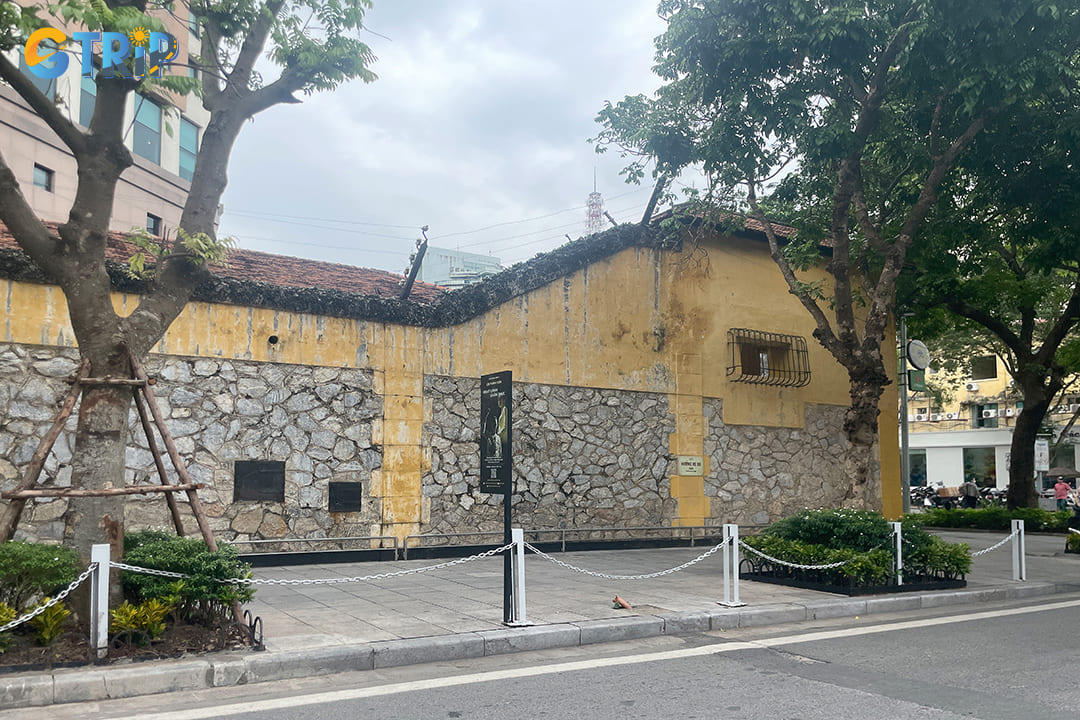
The massive stone walls that surrounded the complex were an imposing sight
Strategically placed guard towers occupied each of the four corners of the compound, providing guards with a comprehensive view of the entire area. A 3-meter-wide sidewalk ran along the inner wall, allowing for continuous patrolling and surveillance. The design ensured full visibility for guards, reinforcing the prison's strict and oppressive atmosphere.
Inside the complex, Hoa Lo Prison was divided into four sections: A, B, C, and D. Sections A and B held inmates under review and dangerous prisoners. Section C was for French or foreign inmates. Section D housed death row prisoners awaiting approval or sentence reduction. Holding cells for regular prisoners, isolated cells for high-profile detainees, and a designated section for female prisoners demonstrated a calculated approach to managing the prison population. These segregations minimized communication and interaction between prisoners, reducing the potential for organized resistance or rebellion. The arrangement also symbolized the rigid hierarchy imposed on the inmates, reflecting the harsh discipline enforced by the colonial regime.
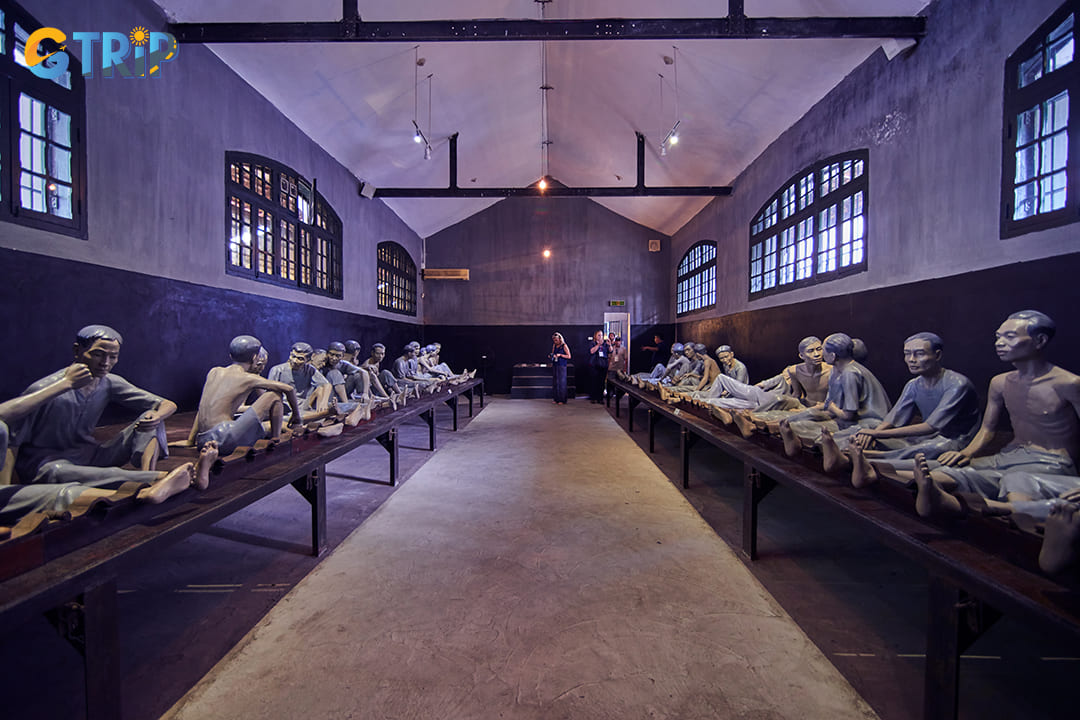
Inside the complex, Hoa Lo Prison was divided into four sections
Initially constructed to detain around 450 prisoners, the prison quickly became overcrowded, holding over 2,000 detainees by the 1930s. The inhumane conditions cramped cells, inadequate sanitation, and minimal nutrition were deliberate tactics to suppress the spirit of independence among Vietnamese nationalists.
Beyond mere confinement, prisoners were subjected to forced labor in various workshops specializing in textiles, ironworks, and leather goods. These workshops served a dual purpose exploitation and psychological suppression. Forced labor was not only a means of producing goods but also a method to dehumanize the inmates, stripping them of their dignity and individuality. The workshops stood as symbols of oppression, a space where prisoners' efforts were commodified while their spirits were systematically broken.
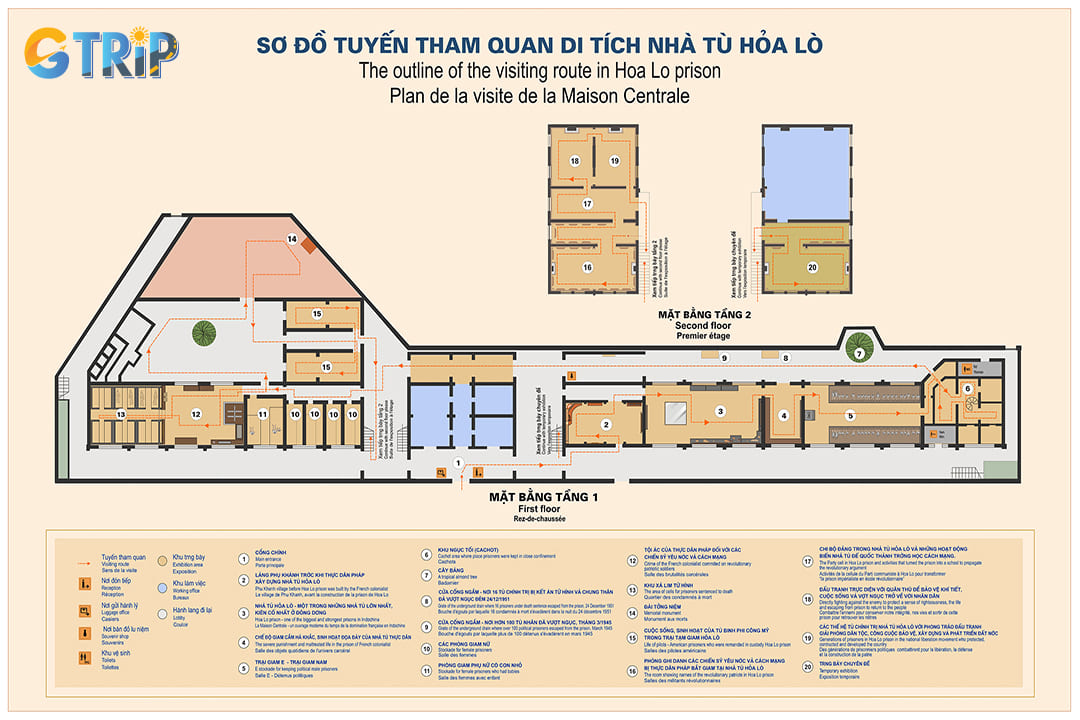
The outline of the visiting route in Hoa Lo Prison
Things to see when visiting at Hoa Lo Prison
Hoa Lo Prison is not merely a historical site but a living museum that vividly recreates the harshest periods of the French colonial era and Vietnam's fight for independence. Tourists to Hoa Lo will have the opportunity to explore artifacts, and recreated prison spaces, and gain insight into the prisoners' lives and the historical significance of the site. For a more immersive experience, you can use audio guides with multiple language options, ensuring accessibility for a global audience.
The French colonial cells
One of the most compelling sections of Hoa Lo Prison is the colonial-era detention cells, divided into four main areas:
- Areas A and B: These housed political prisoners, especially leaders of the anti-French resistance. The inmates here were considered highly dangerous due to their organizational and leadership capabilities.
- Area C: Primarily held French prisoners or foreigners, highlighting the stark discrimination and oppressive tactics of the colonial rulers.
- Area D: The section designated for death row inmates awaiting execution or sentence reduction. The chilling atmosphere emphasizes the prisoners' hopelessness.
The cells were cramped with people, full of chains and crude beds. The thick stone walls, narrow windows, and oppressive atmosphere provide a glimpse into the severe conditions faced by the prisoners. In addition, each room also has a toilet, but it is rarely cleaned, so feces and urine overflow, causing a foul smell and becoming messy and dirty. So when visiting these structures, tourists will be explained in detail to understand the situation of Vietnamese soldiers at that time. Despite the hardships they endured, they still had a fierce spirit of resistance, and this is also the spirit we need to learn.
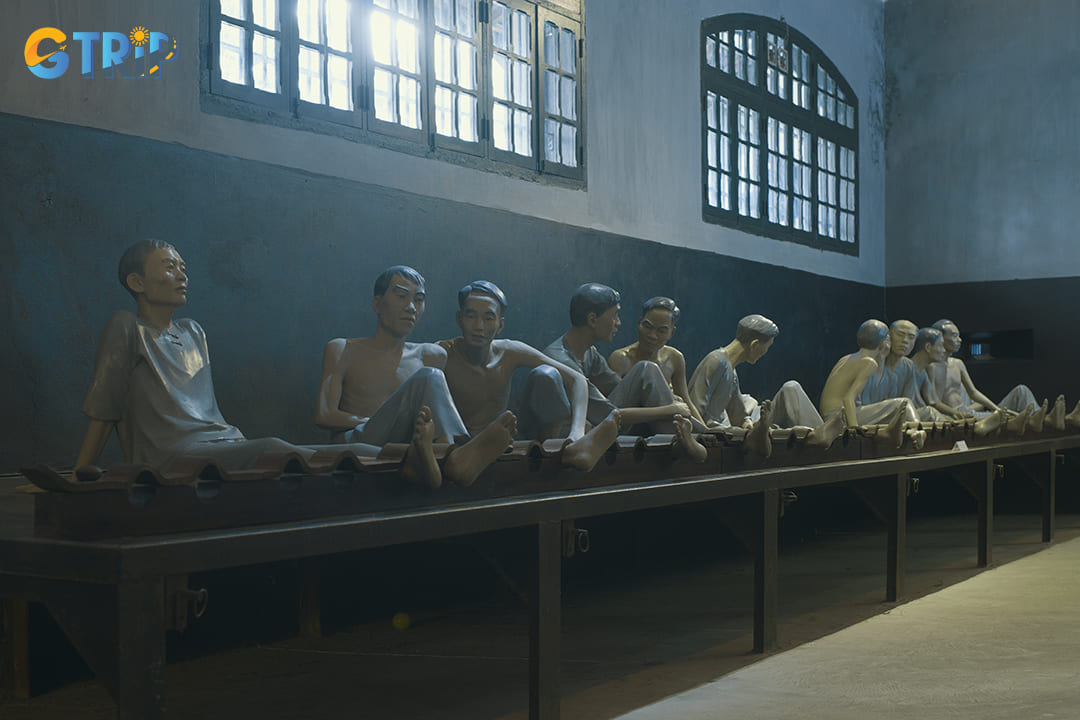
The cells were cramped with people, full of chains and crude beds
Cachot - The dark dungeon
"Cachot", also known as the dark dungeon, is an isolated area measuring only 4 square meters, designed for solitary confinement and punishment.
- Confinement method: Prisoners were shackled to the walls, living in complete darkness with limited air circulation and no natural light.
- Psychological impact: Extended isolation in such harsh conditions led to severe psychological issues, including delusion, disorientation, and depression.
Experiencing the Cachot area serves as a grim reminder of the extreme measures used to suppress and control political dissidents.
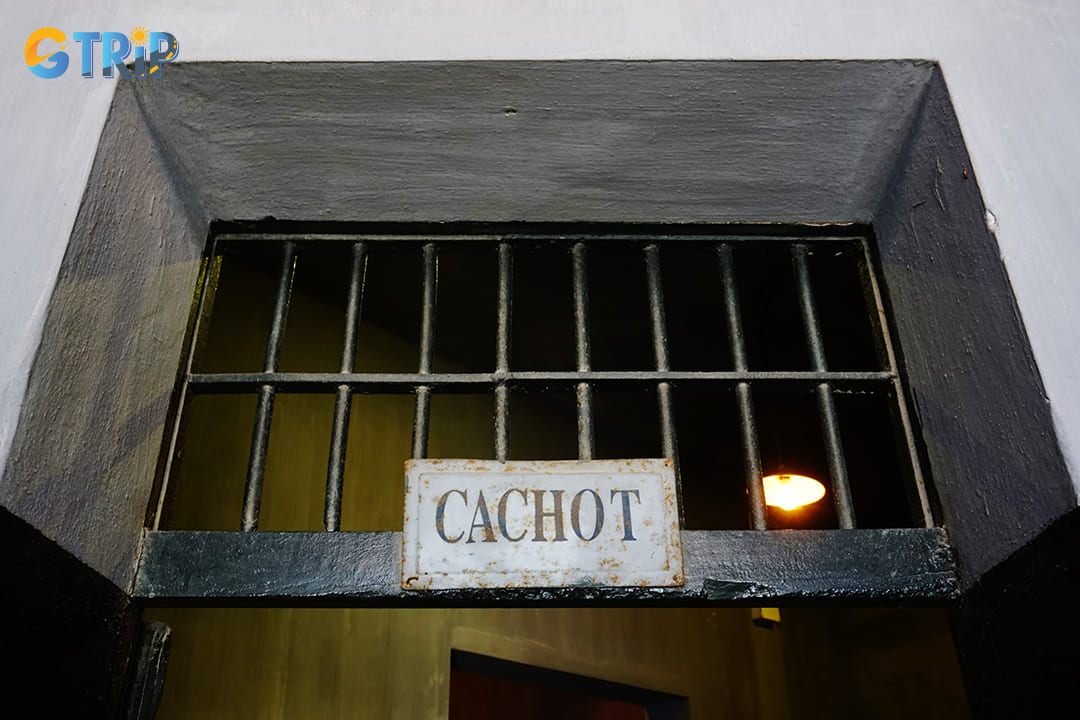
Cachot is an isolated area measuring only 4 square meters, designed for solitary confinement and punishment
The French guillotine
A symbol of colonial oppression, the French guillotine displayed at Hoa Lo Prison is a powerful reminder of the brutal methods used against political prisoners.
- Purpose: Executing political leaders and revolutionaries to instill fear and suppress resistance.
- Historical significance: The guillotine symbolizes the cruelty of the French colonial regime and the indomitable spirit of the Vietnamese revolutionaries.
The guillotine consisted of several main parts:
- The execution table was a flat wooden surface where prisoners lay during executions, with their heads placed into a circular hole.
- The frame stood nearly 4 meters tall, made of iron, and had grooves to guide the blade.
- The blade was steel with a slanted edge.
During execution, the executioner would release a latch and pull a rope, sending the 60-kilogram blade plummeting down. The prisoner's head would fall into a metal bucket below, while the body was placed into a bamboo basket.
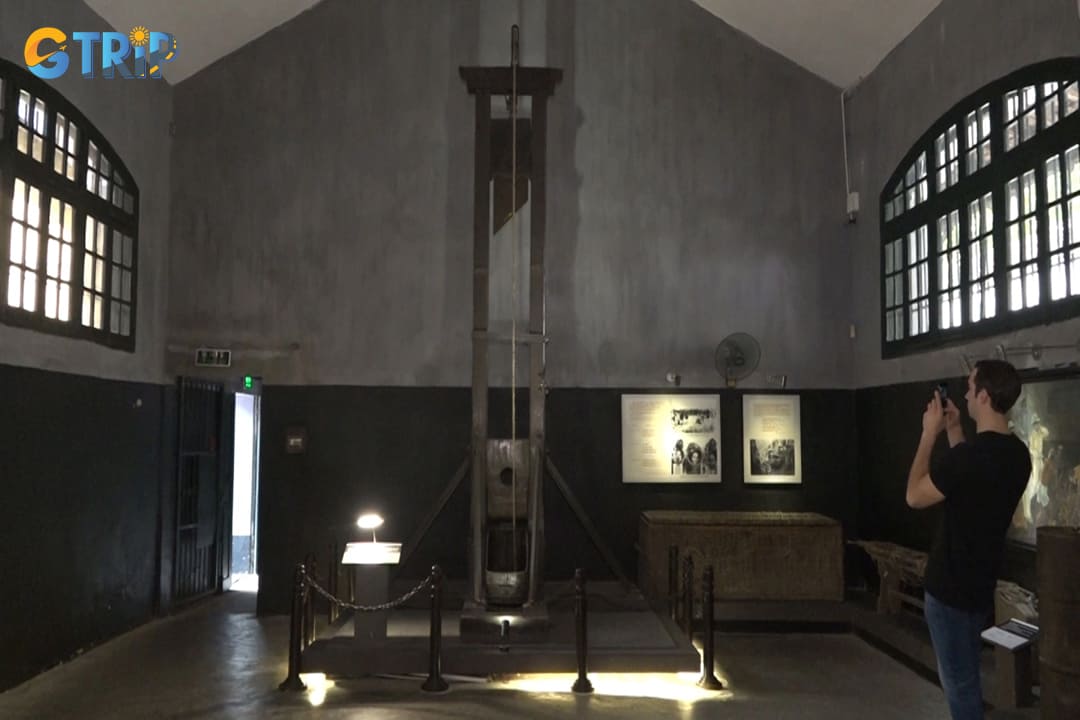
A symbol of colonial oppression, the French guillotine displayed at Hoa Lo Prison is a powerful reminder of the brutal methods used against political prisoners
Artifacts showcasing the harsh detention regime
The displayed artifacts help you understand the severe living conditions of the prisoners:
- Food containers: Cracked bowls and rusty metal water containers symbolize the inadequate and unsanitary rations.
- Prisoner clothing: Torn, thin garments insufficient to protect against the cold.
- Torture devices: Shackles, chains, fuel cans, boxing gloves, and other brutal tools represent the cruelty and violence inflicted on the detainees.
Each artifact tells a unique story, reflecting the unyielding struggle and sacrifice of those who resisted colonial rule.
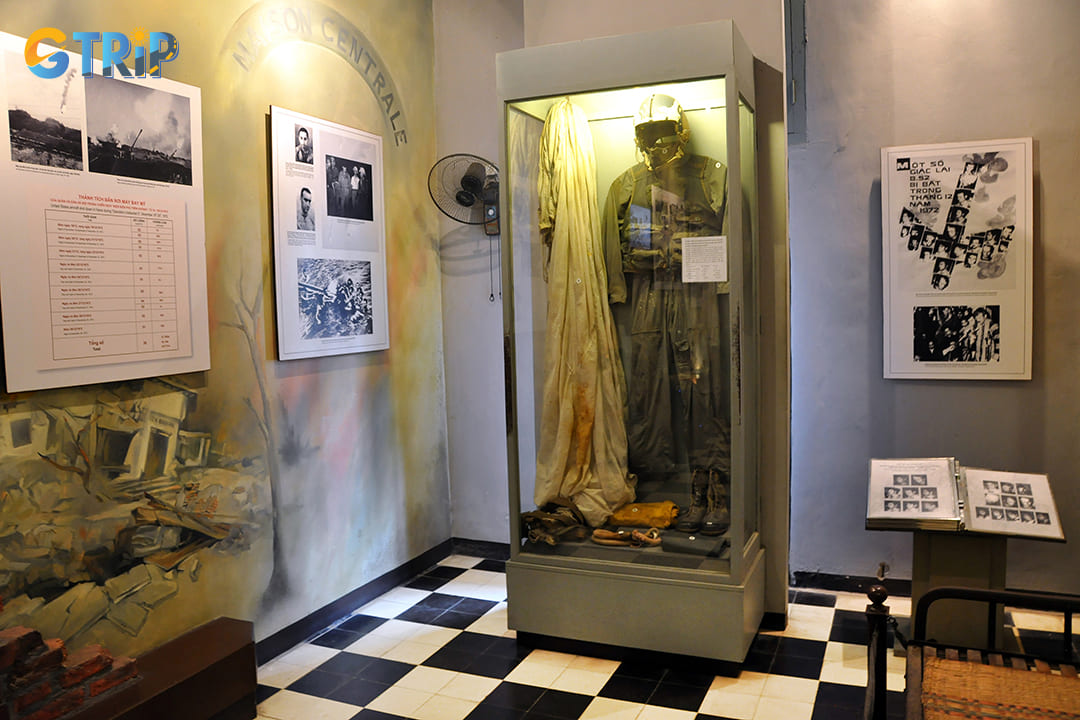
The displayed artifacts help you understand the severe living conditions of the prisoners
The tropical almond trees (Indian almond tree)
In the prison courtyard, you can see the ancient tropical almond trees, silent witnesses to the tumultuous history of Hoa Lo Prison.
- Symbolic meaning: These trees, planted by communist prisoners, represent resilience and hope for a brighter future.
- A shade of hope: Today, the trees not only symbolize past suffering but also serve as a memorial for those who sacrificed their lives.

In the prison courtyard, you can see the ancient tropical almond trees, silent witnesses to the tumultuous history of Hoa Lo Prison
The memorial area
The memorial area is a space for tourists to reflect and pay tribute to those who endured unimaginable hardships.
- A solemn space: Designed in black and white tones, this area conveys a sense of reverence, serenity, and somber remembrance.
- Commemorative plaques: Inscribed with the names of fallen revolutionaries, the plaques serve as a powerful reminder of the cost of independence and the atrocities of colonial oppression.
Hoa Lo Prison is more than just a historical attraction, it is a testament to the enduring spirit of Vietnam’s struggle for independence. Each corner, each artifact of this prison, carries profound significance, reminding us of the value of peace and sovereignty.
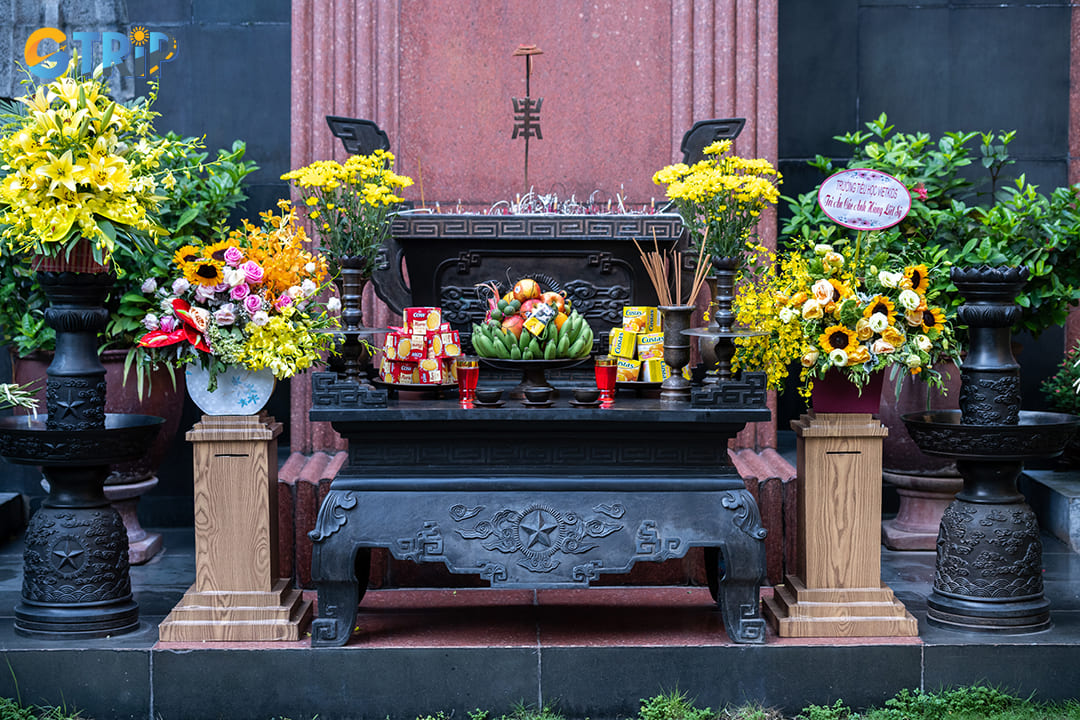
The memorial area is a space for tourists to reflect and pay tribute to those who endured unimaginable hardships
The night tour: Sacred Night - Glorious Vietnamese Spirit
Introduced to deepen the visitor experience, the Sacred Night - Glorious Vietnamese Spirit night tour is a specially curated event that blends history with theatrical performances. The tour includes lighting, sounds and guided storytelling. The narratives focus on the courage of the Vietnamese revolutionaries, their sacrifices, and their unwavering hope for independence. Throughout the journey, you will experience many emotions, from shock and sadness at the harshness of the colonial prison regime to admiration for the indomitable spirit and heroic sacrifice of soldiers in the past.
The tours is held from 7:00 PM on every Friday, Saturday, and Sunday (schedule may vary) and lasts around 90 minutes or more. Specific ticket prices for the Sacred Night at Hoa Lo show are as follows:
- Night 1: Theme 'Radiant Vietnamese Spirit', priced at 399,000 VND ($15.57) per ticket.
- Night 2: Theme 'Living like Flowers', also priced at 399,000 VND ($15.57) per ticket.
- Night 3: Theme 'Flames of Youth', with a ticket price of 499,000 VND ($19.47) per ticket.
Due to the tour's popularity, it is recommended to book tickets in advance through the museum's official website or recognized travel agencies.
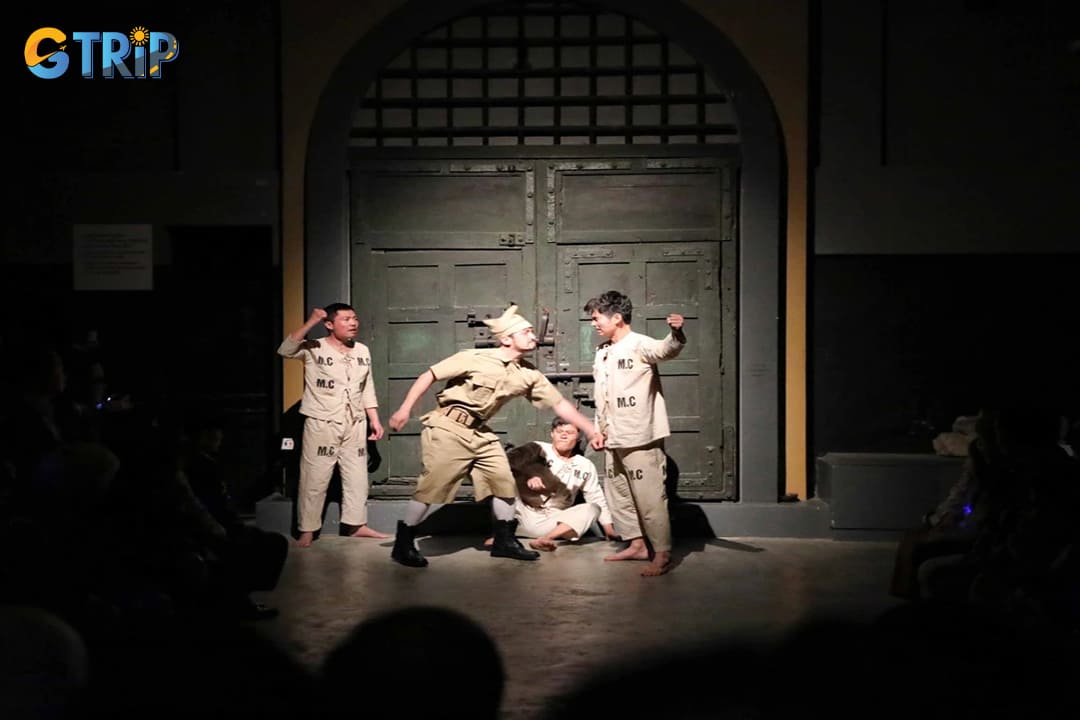
The Sacred Night - Glorious Vietnamese Spirit night tour is a specially curated event that blends history with theatrical performances
Opening hours and entrance fee of Hoa Lo Prison
Visiting Hoa Lo Prison offers a thought-provoking experience that delves deep into Vietnam's complex history. To ensure you make the most of your visit, understanding the operating hours and entrance fees is essential. Below is a detailed guide to help you plan effectively.
Opening hours
Hoa Lo Prison welcomes visitors year-round with the following schedule:
- Opening hours: 8:00 AM – 5:00 PM
- Open days: Every day, including weekends, national holidays, and Tet (Lunar New Year)
Entrance fee structure
The entrance fee for Hoa Lo Prison is set at an affordable rate, ensuring accessibility for various demographics. Below is a detailed breakdown of the fees:
| Visitor category | Entrance fee (VND) | Notes |
|---|---|---|
| Adults (Vietnamese & foreigners) | 50,000 VND | Standard admission for adults aged 15 and above |
| Students | 25,000 VND | Requires students cards |
| Disabled individuals | 25,000 VND | Requires presentation of a valid disability ID |
| Elderly (60 years and above) | 25,000 VND | Proof of age may be requested |
| Children under 15 years old | Free | Accompanied by a guardian or responsible adult |
| Severely disabled individuals | Free | Requires presentation of a valid disability ID |
In addition, Hoa Lo Prison also provides headphone rental service for 50,000 VND/headphone.
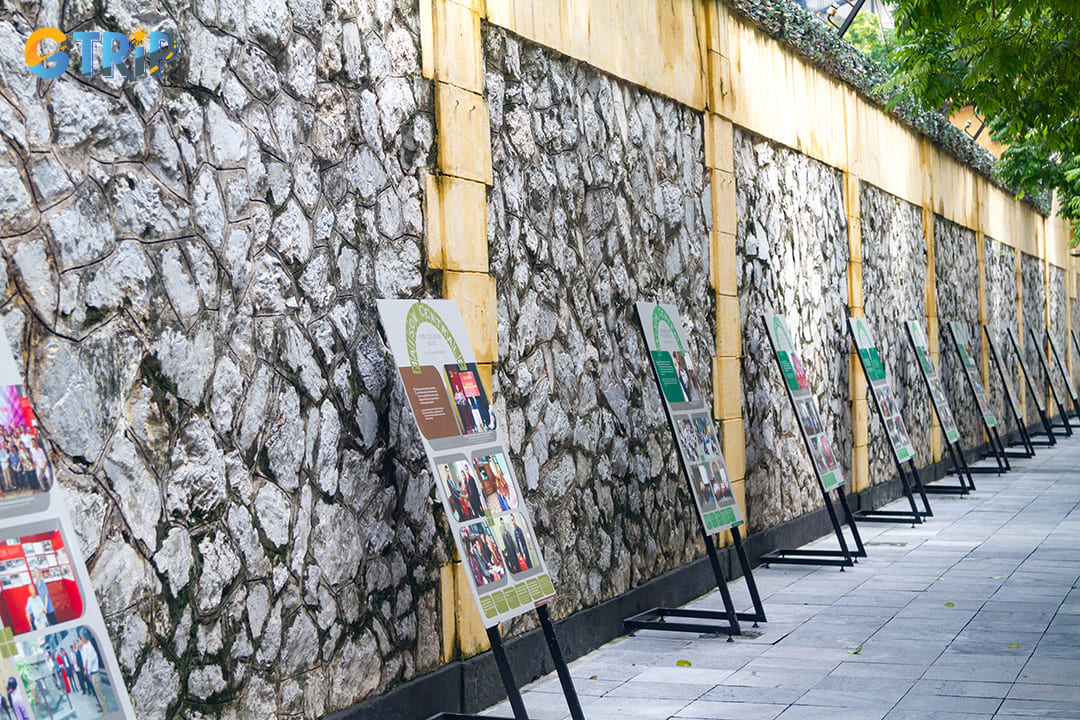
Hoa Lo Prison is open to the public every day from 8:00 AM to 5:00 PM
How to get to Hoa Lo Prison?
Hoa Lo Prison stands as a significant historical and cultural landmark. Its central location makes it easily accessible, even if you’re a solo traveler, a family exploring the city's history, or a part of a guided tour group. This section will guide you through the most effective ways to reach Hoa Lo Prison, considering various modes of transportation, practical tips, and insider advice for a hassle-free visit.
1. By walking (Recommended for nearby attractions)
Hoa Lo Prison is conveniently situated within the bustling Hoan Kiem District, a popular area for tourists. If you're staying in the Old Quarter or near Hoan Kiem Lake, walking to the site can be a great way to explore Hanoi’s local atmosphere.
- From Hoan Kiem Lake: Approximately 10 - 15 minutes on foot.
- From St. Joseph’s Cathedral: About 8 - 10 minutes of walking through vibrant streets.
- From the Temple of Literature: A slightly longer walk, taking around 20 minutes.
Tip: Walking allows you to discover street food vendors, local shops, and cultural spots along the way, enhancing your visit.
2. By public transportation
Hanoi has a growing public transportation system that is affordable and accessible. Here’s how you can use it to reach Hoa Lo Prison:
Bus services:
- The most convenient routes are Bus 02, Bus 32, and Bus 34, all of which have stops near the prison.
- Fare: Approximately 7,000 VND (around 0.30 USD).
- Buses generally operate from 5:00 AM to 10:00 PM, making it feasible for most visiting hours.
How to navigate:
- Use the BusMap app for accurate real-time schedules.
- Inform the bus conductor of your stop - simply say “Nha tu Hoa Lo”.
Tip: Public buses can be crowded during peak hours (7:00 AM - 9:00 AM and 5:00 PM - 7:00 PM). Plan accordingly.
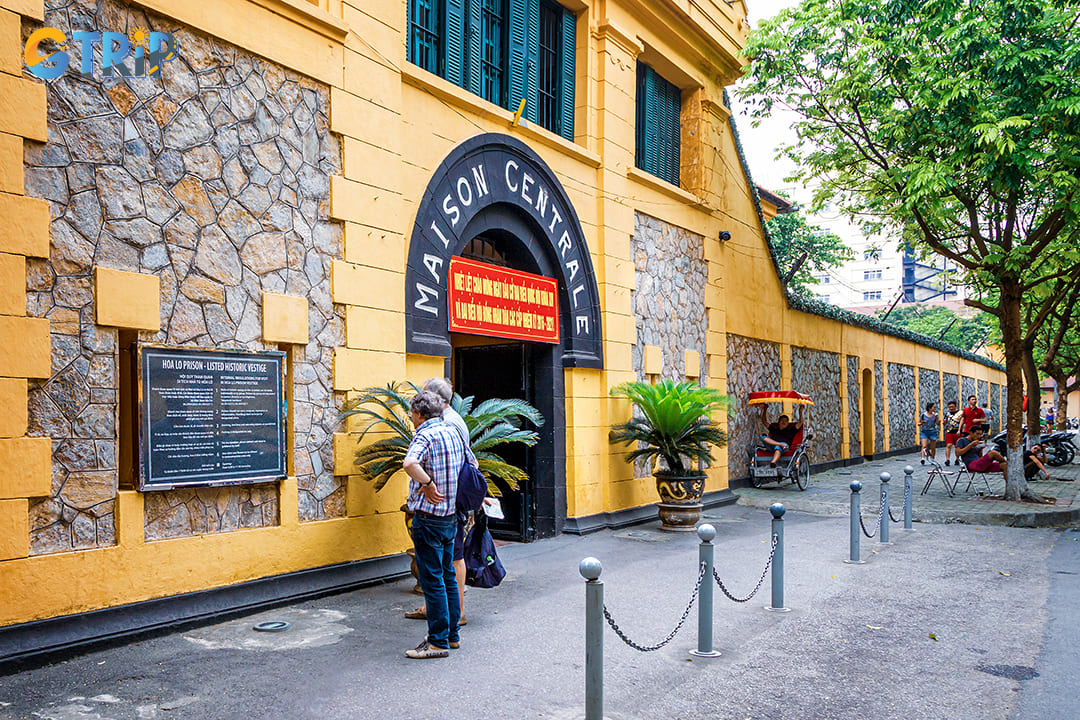
Hoa Lo Prison is conveniently situated within the bustling Hoan Kiem District, a popular area for tourists
3. By taxi or ride-hailing apps
For comfort and convenience, taxis and ride-hailing services like Grab or Be are popular in Hanoi.
Taxi services:
- Reliable companies include Mai Linh Taxi and Vinasun Taxi.
- Fare estimate: Around 50,000 - 80,000 VND (2 - 3.5 USD) from central locations like the Old Quarter.
Ride-hailing apps:
- Grab and Be are accessible and typically cheaper than traditional taxis.
- Both apps support English and allow cashless payments.
Tip: Ensure the driver understands “Hoa Lo Prison” or show the address on your phone for accuracy.
4. By motorbike or scooter
If you prefer a more adventurous experience, consider renting a motorbike or scooter. It's a popular way to explore Hanoi and can be convenient for travelers familiar with navigating urban traffic.
Rental services:
- Rental agencies are abundant near the Old Quarter, offering daily rates between 100,000 - 150,000 VND (4 - 6 USD).
- A valid international driving permit (IDP) is recommended.
Parking:
- Public parking is available near Hoa Lo Prison, usually costing around 5,000 - 10,000 VND (0.20 - 0.40 USD).
Note: Hanoi traffic can be overwhelming for beginners. If you're not confident in riding, opt for other transportation options.
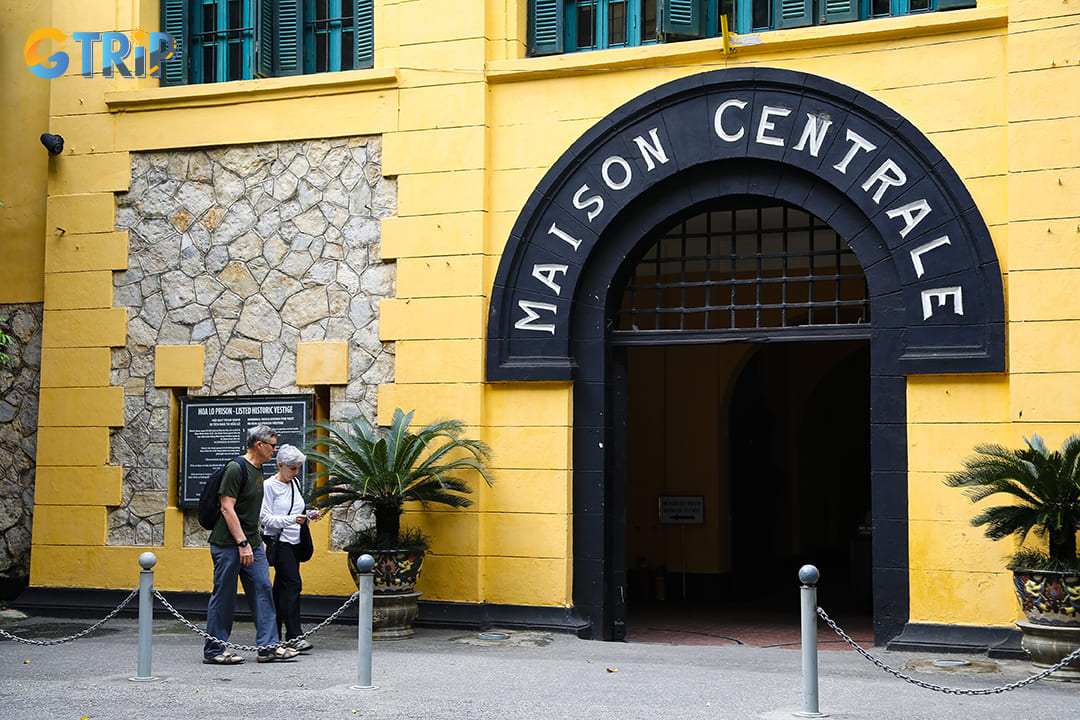
If you prefer a more adventurous experience, consider renting a motorbike or scooter
Read more: Top 5 Trusted Places For Motorbike Rental In Hanoi
5. By bicycle
For eco-conscious travelers or those seeking a more leisurely experience, bicycles are a fantastic option. Several hotels and rental shops provide bicycles for daily use or on the street, public parks often have TNGo company bicycles that can be rented on the app so you can find out and download it.
Rental rates: Generally 40,000 - 70,000 VND (1.5 - 3 USD) per day.
Cycling path: The roads near the Hoan Kiem area are bike-friendly, but avoid cycling during rush hours.
Tip: Lock your bike securely, as theft can occur in busy tourist spots.
Regardless of your chosen transportation method, reaching Hoa Lo Prison is straightforward and accessible. The journey to this historic site can also serve as a cultural exploration of Hanoi, offering glimpses of the city’s vibrant street life and rich history. Visiting Hoa Lo Prison is an opportunity to connect with Vietnam’s complex past while navigating the present-day energy of Hanoi.
Read more: Best Places for Bike Rental in Hanoi
Nearby attractions from Hoa Lo Prison
Hoa Lo Prison's location in the heart of Hanoi makes it an ideal starting point for exploring several nearby attractions. For people seeking to expand their understanding of Hanoi’s heritage and experience the city's vibrant atmosphere, here are some must-visit attractions conveniently accessible from Hoa Lo Prison.
Temple of Literature (1.4 km)
Located about 1.4 kilometers from Hoa Lo Prison, the Temple of Literature is a symbol of Vietnam's dedication to education and intellectual pursuits. Constructed in 1070, this historic site is considered Vietnam's first national university, originally built to honor Confucius and educate the nation's elite.
Why visit:
- Architectural grandeur: The complex features traditional Vietnamese architecture with five courtyards. It also includes ancient stone steles engraved with the names of successful scholars and intricate altars dedicated to Confucius and his disciples.
- Cultural experience: You can witness traditional calligraphy during Tet (Lunar New Year) and participate in cultural events showcasing Vietnamese music and dance.
- Photographic opportunities: The temple's lush gardens, koi ponds, and classical gateways offer picturesque settings for photography.
Travel tips:
- Open daily from 8:00 AM to 5:00 PM, closed on Mondays.
- Entrance fee: Approximately 30,000 VND (~$1.25 USD).
- Best visited in the early morning to avoid crowds.
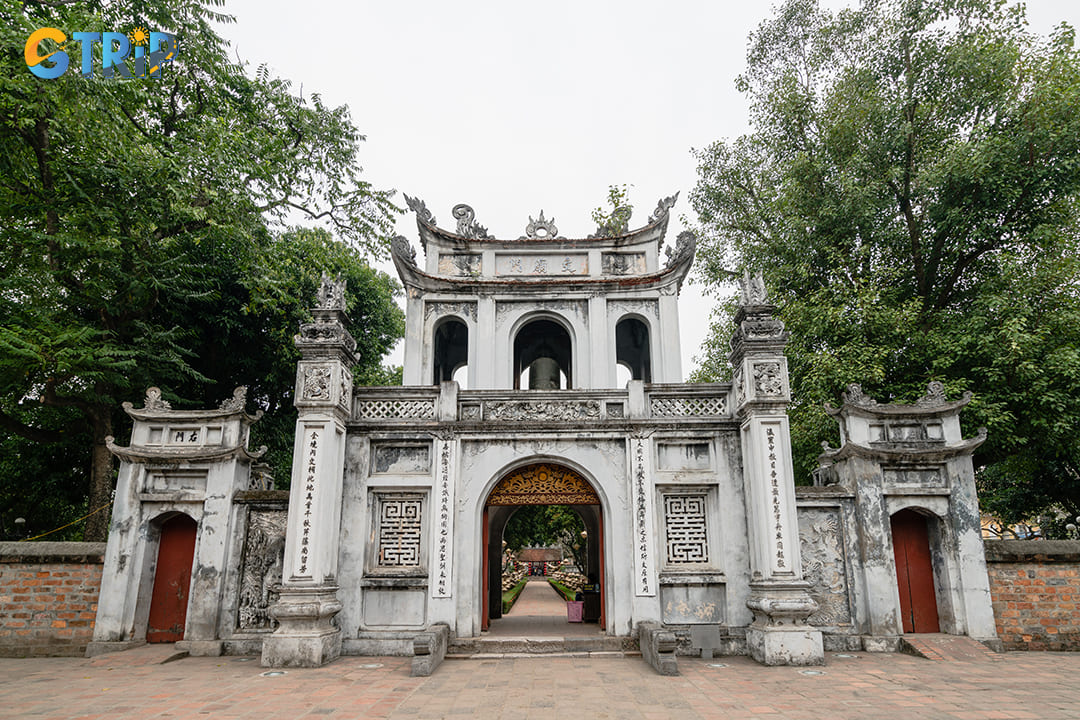
The Temple of Literature is a symbol of Vietnam's dedication to education and intellectual pursuits
Hoan Kiem Lake (1.3 km)
Approximately 1.3 kilometers from Hoa Lo Prison, Hoan Kiem Lake is a serene oasis amidst the bustling city. Known as the “Lake of the Restored Sword”, it is deeply intertwined with Vietnamese folklore about Emperor Le Loi, who returned a magical sword to a golden turtle deity here.
What to explore:
- Ngoc Son Temple: Located on a small island in the lake, connected by the iconic red Huc Bridge. The temple is dedicated to General Tran Hung Dao, revered for his resistance against the Mongols.
- Morning Tai Chi: Join locals practicing Tai Chi at dawn - a unique glimpse into Hanoi’s traditional lifestyle.
- Weekend walking streets: From Friday evening to Sunday night, the surrounding roads become pedestrian-only, featuring street performances, cultural shows, and local cuisine.
Visitor information:
- Entrance to Hoan Kiem Lake is free; a small fee applies for visiting Ngoc Son Temple (~30,000 VND).
- Best visited during sunrise or sunset for the most captivating views.

Hoan Kiem Lake is a serene oasis amidst the bustling city
Hanoi Old Quarter (2 km)
Situated around 2 kilometers from Hoa Lo Prison, the Hanoi Old Quarter is a labyrinth of 36 ancient streets, each traditionally dedicated to a specific trade or craft. Known for its lively ambiance, this area is a vibrant blend of history, commerce, and local culture.
Key experiences:
- Exploring traditional crafts: Streets like Hang Bac (silver), Hang Ma (paper votives), and Hang Gai (silk) still maintain their original trades, offering authentic shopping experiences.
- Street food paradise: Taste Hanoi’s famous dishes like pho bo (beef noodle soup), bun cha (grilled pork with noodles), and egg coffee - a unique, creamy treat.
- Colonial architecture: Discover French colonial influences in the architecture of shophouses, government buildings, and St. Joseph's Cathedral.
Travel tips:
- The Old Quarter is best explored on foot or by cyclo (traditional tricycle taxi).
- Beware of traffic when crossing streets; use pedestrian crosswalks when possible.
- Visit the Dong Xuan Market for a local shopping experience.
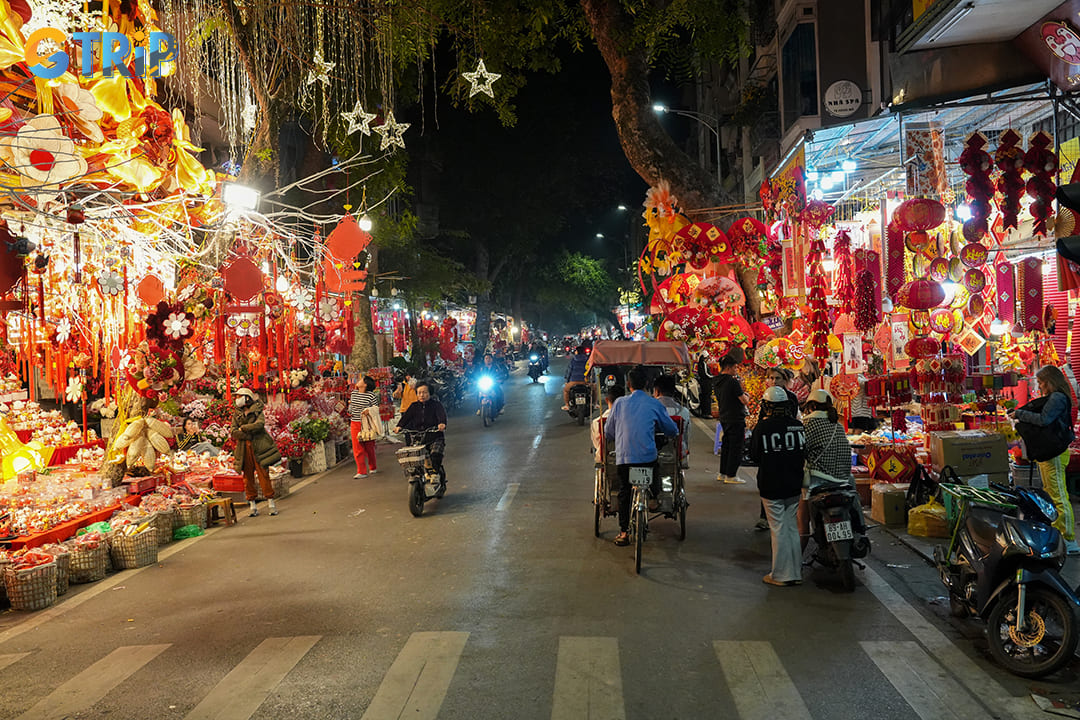
The Hanoi Old Quarter is a labyrinth of 36 ancient streets, each traditionally dedicated to a specific trade or craft
Vietnam National Museum of History (1.5 km)
Located just 1.5 kilometers from Hoa Lo Prison, the Vietnam National Museum of History stands as a premier institution dedicated to showcasing Vietnam’s extensive past. Nestled in central Hanoi, this museum offers a comprehensive narrative of the country’s evolution from prehistoric times to the modern era.
The museum is divided into several permanent galleries, each focusing on a distinct period of Vietnamese history. You can explore exhibits that feature a vast collection of artifacts, including ancient ceramics, sculptures, coins, and inscriptions. These displays illustrate the cultural and technological advancements of successive Vietnamese dynasties and offer insight into the country’s interactions with neighboring civilizations.
Key highlights include:
- Prehistoric artifacts: Discover tools, pottery, and fossil remains that trace human settlement in Vietnam from the Paleolithic era onward.
- Bronze and Iron Ages: Exhibits reveal the craftsmanship and societal organization of early Vietnamese communities through detailed bronze vessels and iron implements.
- Dynastic displays: Galleries dedicated to the Ly, Tran, and later dynasties showcase intricately designed sculptures, religious artifacts, and royal regalia that narrate the evolution of Vietnamese governance and culture.
- French colonial influence and modern history: Artifacts from the colonial period, including documents and everyday items, provide context on the transformative impact of European influence and the subsequent struggle for independence.
The museum frequently hosts temporary exhibitions and educational programs designed to engage both scholars and casual tourists. With well-curated displays and informative plaques, it not only serves as an educational hub but also as a bridge connecting Vietnam’s storied past. The Vietnam National Museum of History offers a profound glimpse into the rich cultural heritage that has shaped modern Vietnam.
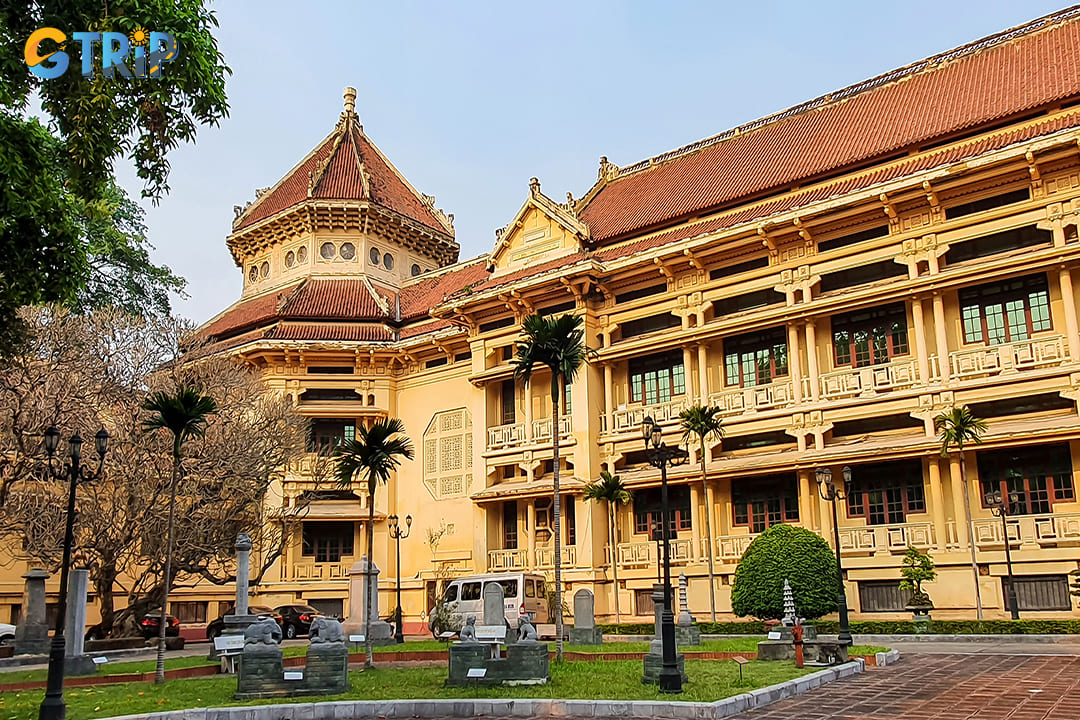
The Vietnam National Museum of History stands as a premier institution dedicated to showcasing Vietnam’s extensive past
Accommodation near Hoa Lo Prison
Choosing the right lodging near Hoa Lo Prison can greatly enhance your visit to Hanoi’s historical and cultural richness. Conveniently located in the Hoan Kiem District, the area offers a variety of accommodations-from luxury hotels to budget hostels that cater to every traveler's needs. Below is a comprehensive guide to nearby lodging options with accurate addresses, contact numbers, and approximate price ranges to help you plan a comfortable and enriching stay.
Luxury hotels (4 - 5 stars)
Sofitel Legend Metropole Hanoi
- Address: 15 Ngo Quyen Street, Hoan Kiem Ward, Hanoi
- Phone: +84 24 3826 6919
- Price range: Approximately 5,500,000 - 10,000,000 VND per night (roughly $214 - $390)
An iconic hotel blending French colonial charm with modern luxury. Its historical ambiance, world-class service, and proximity to landmarks like Hoan Kiem Lake make it an excellent choice for discerning travelers.
Melia Hanoi
- Address: 44B Ly Thuong Kiet Street, Hoan Kiem Ward, Hanoi
- Phone: +84 24 3934 3343
- Price range: Approximately 3,000,000 - 7,600,000 VND per night (roughly $117 - $296)
Known for its sophisticated design and upscale amenities, Melia Hanoi offers elegant dining options, an outdoor pool, and stunning city views within a short walk from key attractions.
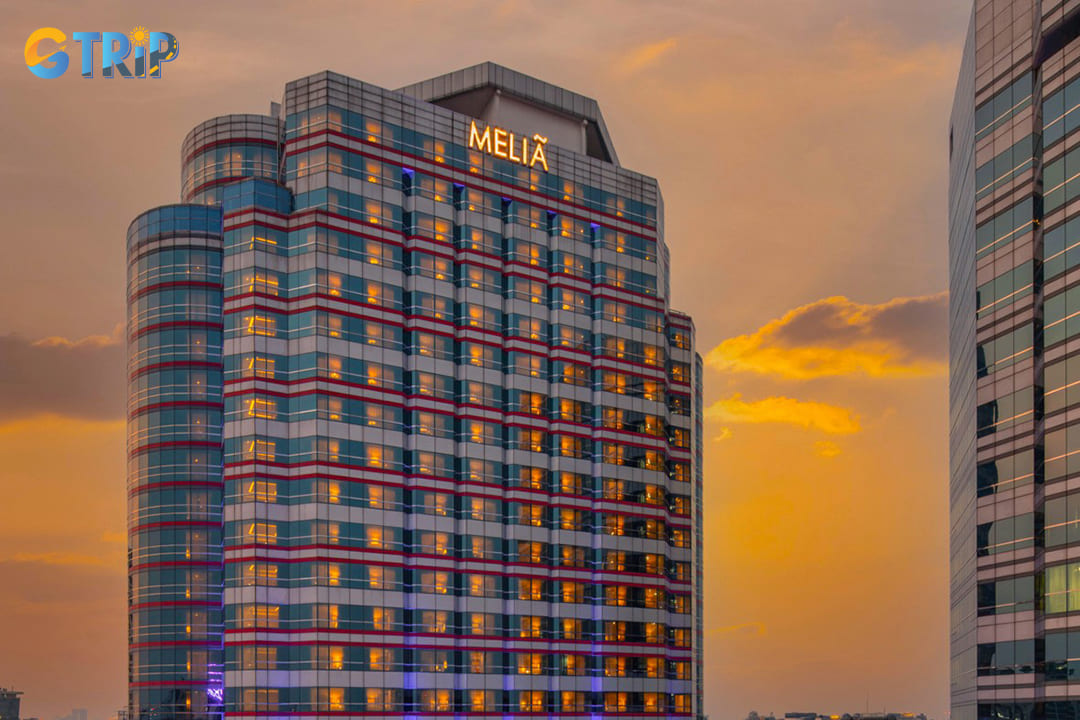
Melia Hanoi offers elegant dining options, an outdoor pool, and stunning city views
Apricot Hotel Hanoi
- Address: 136 Hang Trong Street, Hoan Kiem Ward, Hanoi
- Phone: +84 24 3828 9595
- Price range: Approximately 3,700,000 - 7,700,000 VND per night (roughly $144 - $300).
Fusing Vietnamese artistry with contemporary luxury, Apricot Hotel provides a refined experience with beautifully decorated rooms and exceptional service.
Mid-range hotels (3 - 4 Stars)
La Siesta Premium Hang Be
- Address: 27A Hang Be Street, Hoan Kiem Ward, Hanoi, Vietnam
- Phone: +84 24 3929 0011
- Price Range: Approximately 2,400,000 - 5,500,000 VND per night (roughly $94 - $214).
Praised for its warm hospitality and stylish decor, La Siesta Premium Hang Be is ideally located near both Hoa Lo Prison and Hoan Kiem Lake, offering a perfect blend of comfort and convenience.
Mercure Hanoi La Gare
- Address: 94 Ly Thuong Kiet Street, Hoan Kiem Ward, Hanoi
- Phone: +84 24 3944 7766
- Price range: Approximately 1,400,000 - 5,000,000 VND per night (roughly $60 - $195).
Combining French colonial charm with modern amenities, Mercure Hanoi La Gare is situated near the railway station and key shopping districts. This is a great choice for both leisure and business travelers.
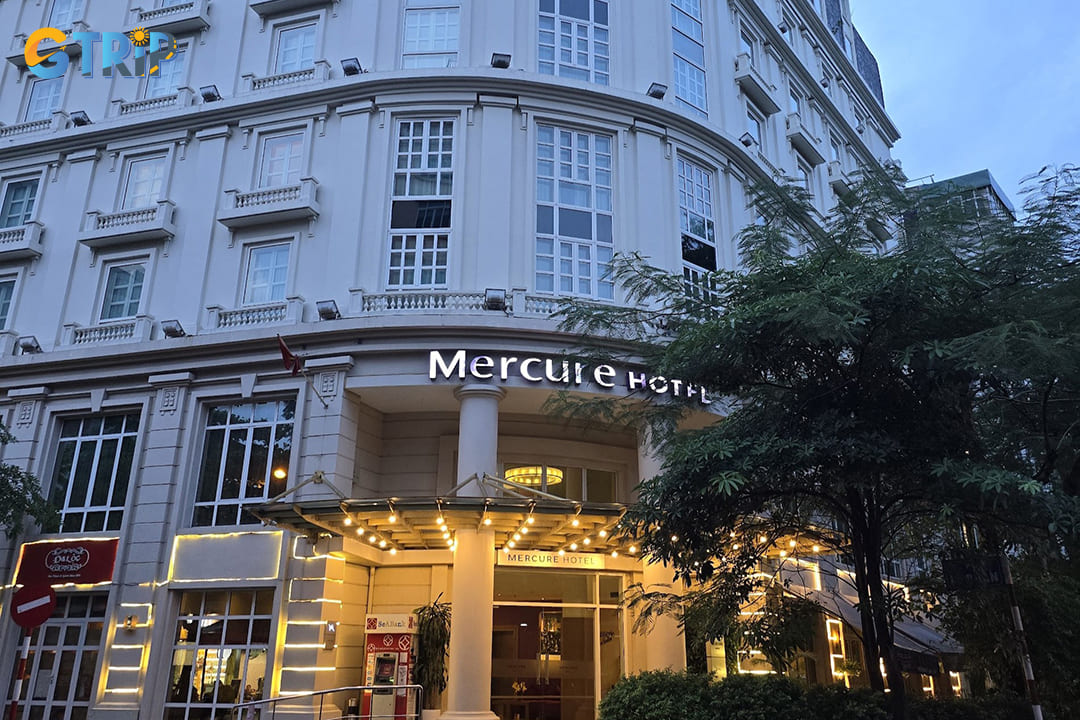
Mercure Hanoi La Gare is situated near the railway station and key shopping districts
Hanoi Pearl Hotel
- Address: 6 Bao Khanh Street, Hoan Kiem Ward, Hanoi, Vietnam
- Phone: +84 24 3938 0666
- Price range: Approximately 1,300,000 - 5,400,000 VND per night (roughly $51 - $211).
Located in the heart of the Old Quarter, Hanoi Pearl Hotel offers cozy accommodations with a mix of traditional Vietnamese aesthetics and modern comforts.
Budget accommodation (Hostels & guesthouses)
Little Charm Hanoi Hostel
- Address: 44 Hang Bo Street, Hoan Kiem Ward, Hanoi, Vietnam
- Phone: +84 93 355 5689
- Price range: Approximately 300,000 - 460,000 VND per night (roughly $12 - $20)
A favorite among backpackers, this hostel offers both dormitory-style and private rooms in a lively, social atmosphere. Ideal for budget travelers looking to connect with fellow adventurers.
Hanoi Backpackers Hostel & Rooftop Bar
- Address: No.01 Hai Tuong Lane/ Ta Hien Street, Hoan Kiem Ward (No.01 Hai Tuong Lane/ Ta Hien Street, Hang Buom, Hoan Kiem District, Hanoi)
- Phone: +84 24 3935 2468
- Price range: Approximately 300,000 - 1,000,000 VND per night (roughly $12 - $39)
Known for its friendly staff and affordable rates with a rooftop bar, this hostel is situated in the heart of the Old Quarter, providing easy access to local markets and street food.
Madam Moon Hotel
- Address: 17 Hang Hanh Street, Hoan Kiem Ward, Hanoi
- Phone: +84 24 3993 9678
- Price Range: Approximately 350,000 - 580,000 VND per night (roughly $15 - $25)
This family-run guesthouse offers personalized service and a cozy environment, ideal for travelers seeking a more intimate and authentic local experience.
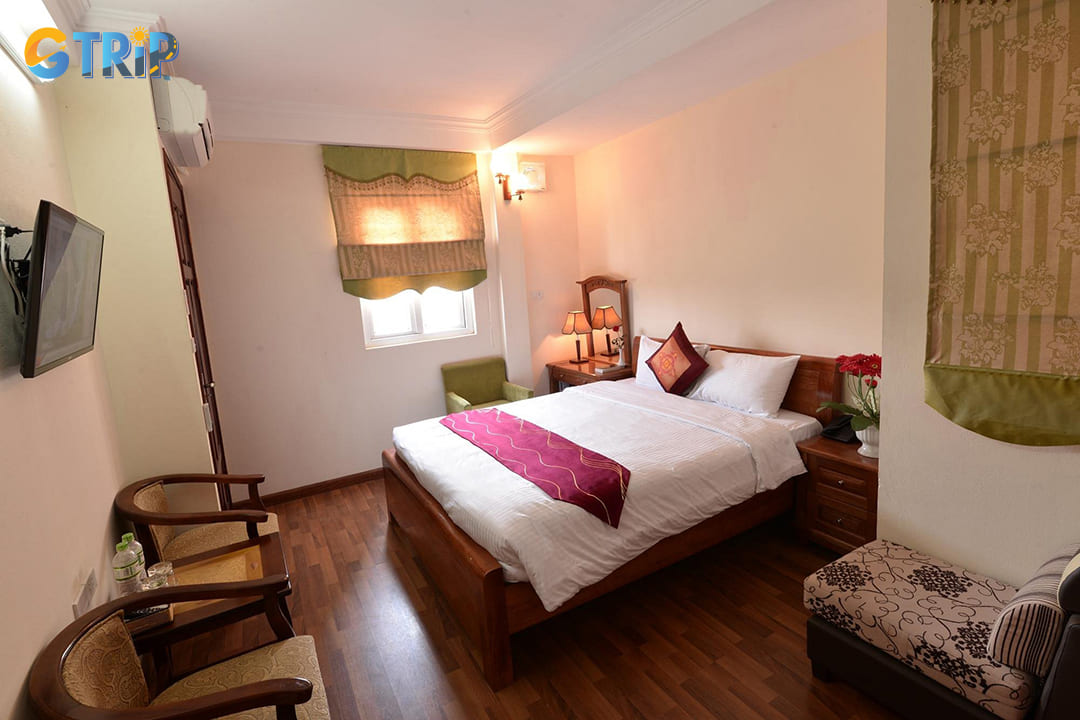
Madam Moon Hotel is ideal for travelers seeking a more intimate and authentic local experience
Note: The prices provided are approximate ranges and may vary based on seasonality, booking platform, and current exchange rates. It is advisable to confirm the rates directly with the accommodation before booking.
Hanoi specialties must-try when visiting Hoa Lo Prison
When visiting Hoa Lo Prison, don't miss the chance to explore the rich culinary heritage of Hanoi through its must-try local specialties that we will list below for you.
Bun cha: Grilled pork with vermicelli
If you're visiting Hoa Lo Prison, trying bun cha is a must. This classic Hanoi dish consists of flavorful grilled pork patties and slices, served alongside a bed of vermicelli noodles, fresh herbs, and a tangy dipping sauce made from fish sauce, vinegar, garlic, and chili. Often accompanied by fried spring rolls, bun cha offers a perfect balance of smoky, savory, and slightly sweet flavors.
A favorite among locals and travelers alike, bun cha gained international fame when former U.S. President Barack Obama enjoyed it with Anthony Bourdain during his visit to Hanoi. Many eateries near Hoa Lo Prison serve this specialty, allowing tourists to immerse themselves in the authentic culinary culture of Hanoi. The blend of tender grilled pork, fresh herbs, and the vibrant dipping sauce creates a memorable culinary experience.

If you're visiting Hoa Lo Prison, trying bun cha is a must
Read more: : 10 Best Bun Cha in Hanoi for Authentic Flavor
Pho: Vietnam's iconic noodle soup
Pho is arguably the most renowned Vietnamese dish, a symbol of the nation's culinary identity. The rich, aromatic broth, simmered for hours with beef bones, star anise, and cinnamon, creates a deep, comforting flavor. The dish typically features flat rice noodles, and tender slices of beef or chicken, and is garnished with fresh herbs like basil, cilantro, and lime.
Near Hoa Lo Prison, several street vendors and small eateries serve steaming bowls of pho. Each establishment may have its own take on the broth and toppings, making it worthwhile to explore different places. Pho is a must-try experience that connects tourists with the essence of Hanoi's culinary traditions.
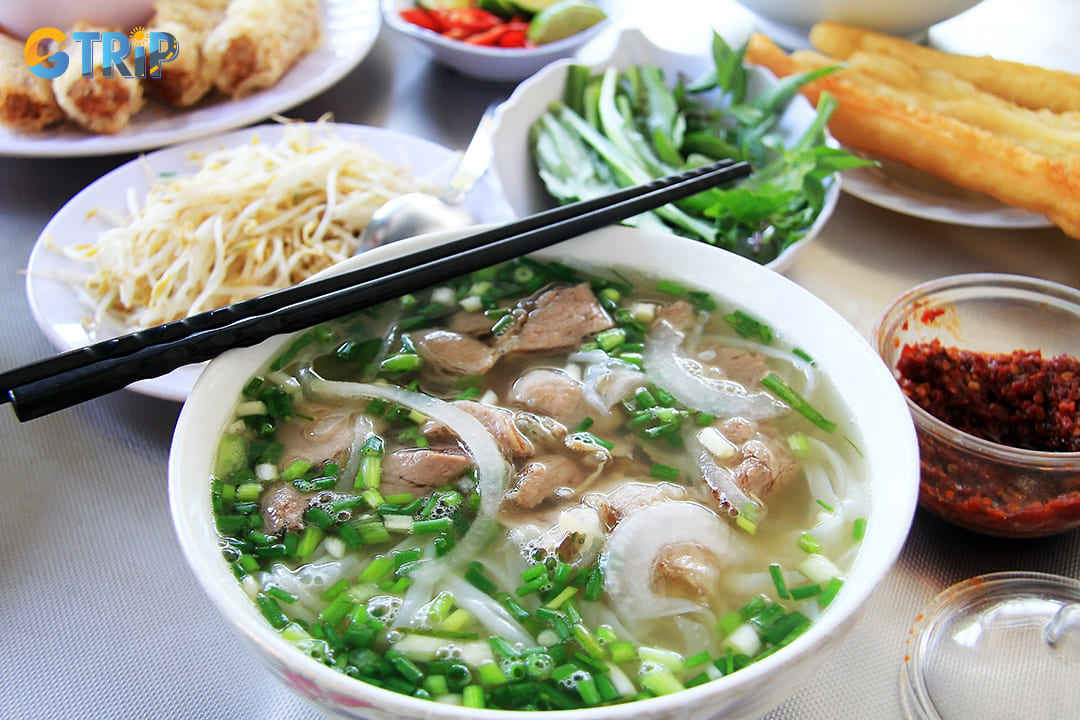
Pho is arguably the most renowned Vietnamese dish, a symbol of the nation's culinary identity
Read more: Top 12+ Places to Try Delicious and Authentic Pho in Hanoi
Cha ca la vong: Turmeric fish with dill
Cha ca la vong is a unique and distinctive Hanoi specialty that has been enjoyed for over a century. The dish features chunks of grilled fish marinated in turmeric, garlic, and galangal, then sautéed with fresh dill and spring onions. It is typically served with vermicelli noodles, roasted peanuts, fresh herbs, and a savory dipping sauce made from fish sauce and shrimp paste.
The combination of flavors-earthy turmeric, fragrant dill, and the slight saltiness of shrimp creates a dish that stands out from typical Vietnamese cuisine. Not far from Hoa Lo Prison, you can find restaurants specializing in cha ca la vong, where the preparation process often takes place right at your table.
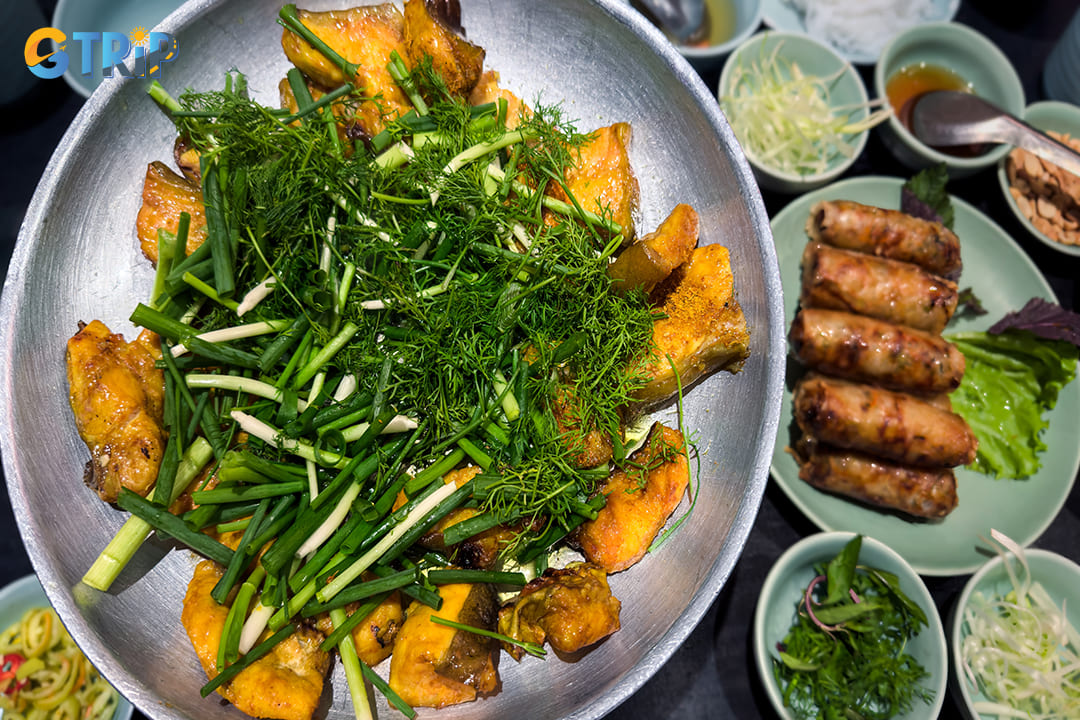
Cha ca la vong is a unique and distinctive Hanoi specialty that has been enjoyed for over a century
Banh cuon: Steamed rice rolls
Banh cuon is a delicate yet flavorful dish made from thin, steamed rice flour sheets filled with minced pork, mushrooms, and shallots. The rolls are typically served with a dipping sauce of fish sauce, lime, garlic, and chili, accompanied by fresh herbs and crispy fried shallots.
Eating banh cuon is a delightful experience as the softness of the rice rolls contrasts with the crunch of the fried shallots. This dish is commonly enjoyed as a light breakfast or snack, making it a convenient and satisfying choice before or after exploring Hoa Lo Prison. Several street vendors and small shops in the nearby Old Quarter serve authentic banh cuon with a variety of fillings.
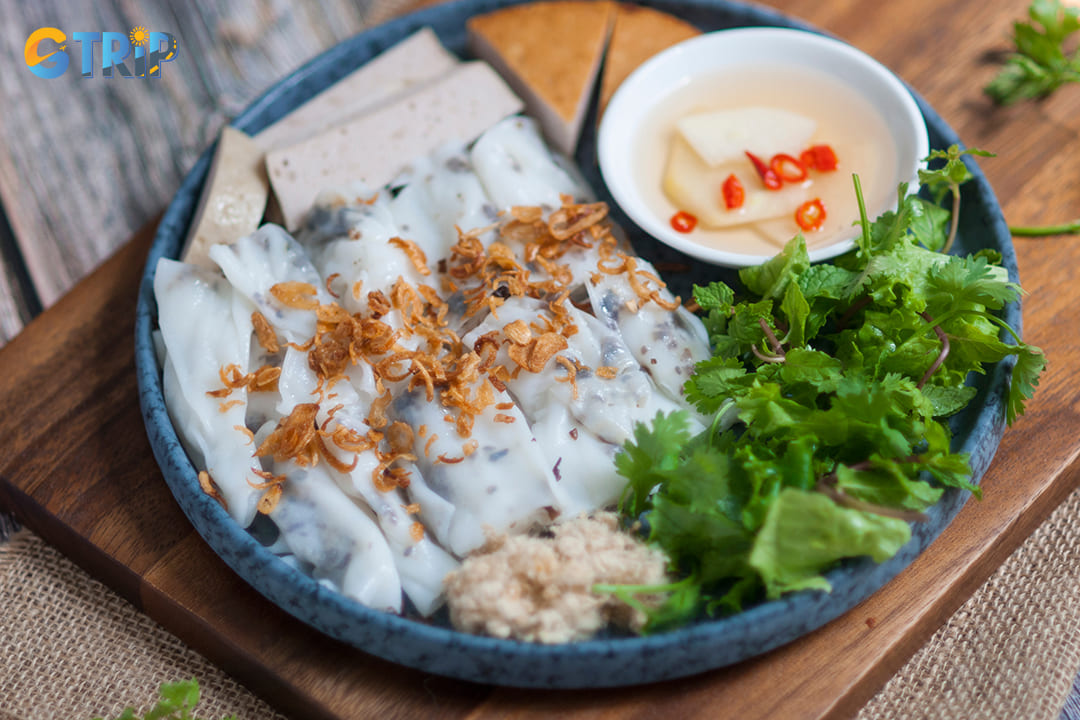
Eating banh cuon is a delightful experience as the softness of the rice rolls contrasts with the crunch of the fried shallots
Egg coffee: A unique Hanoi beverage
Egg coffee is a distinctive Hanoi creation that perfectly combines strong Vietnamese coffee with a creamy, whipped egg yolk mixture. The drink has a rich, velvety texture, and the sweetness of the frothy egg custard balances the bitterness of the robust coffee.
Originally created in the 1940s as a substitute for milk during a period of scarcity, egg coffee has become an iconic beverage in Hanoi. Several charming cafes near Hoa Lo Prison serve this specialty, offering a cozy atmosphere to relax and reflect on your visit to the historical site. For a unique twist, some cafés also serve iced versions, perfect for hot days.
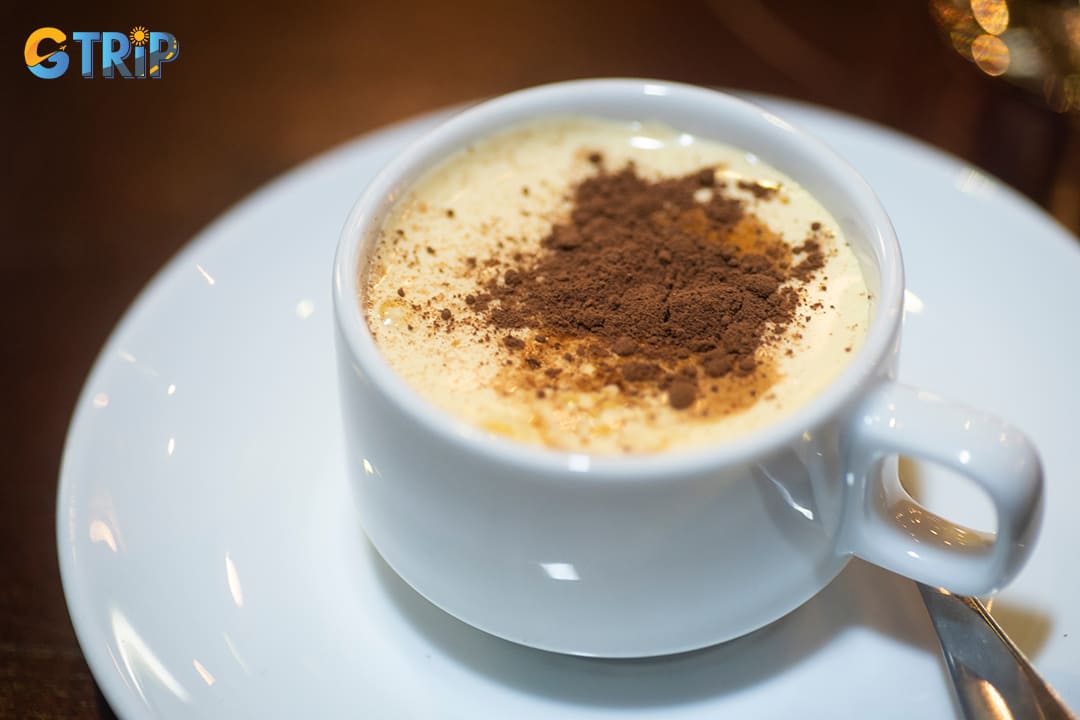
Egg coffee perfectly combines strong Vietnamese coffee with a creamy, whipped egg yolk mixture
Read more: Top 7 Authentic Egg Coffees in Hanoi Beloved Local Spots You Can’t Miss
Important travel tips for tourists when visiting Hoa Lo Prison
- Respect the site's significance: Hoa Lo Prison holds deep historical value, symbolizing the struggles and sacrifices of both Vietnamese revolutionaries and foreign prisoners. Maintain a respectful demeanor throughout your visit.
- Dress appropriately: As a historical and solemn site, it is recommended to wear modest and respectful clothing. Avoid revealing attire out of respect for the significance of the location.
- Photography guidelines: While photography is generally allowed, refrain from using flash to protect delicate artifacts. Pay attention to signs indicating areas where photography may be restricted.
- Visit during off-peak hours: If you wish to avoid crowds and have a more reflective experience, consider visiting during weekdays or early in the morning.
- Take your time to learn: Allocate around 1 to 1.5 hours for a comprehensive visit. Read the informational plaques and take the opportunity to learn about the prison's history.
- Language support: Information at the museum is presented in both Vietnamese and English. However, guided tours or audio guides in English can provide deeper insights.
- Be mindful of intense content: Some exhibits may depict intense or emotional events from the past. Prepare yourself for the solemn atmosphere and sensitive historical narratives.
- Souvenir shopping: Support the preservation of the museum by purchasing meaningful memorabilia from the official gift shop. These items can be thoughtful souvenirs that help maintain the site's upkeep.
- Stay hydrated: The museum can become crowded, and exploring the exhibits may take time. Bring a water bottle to stay hydrated, but remember not to consume food or drink inside exhibition areas.
By keeping these tips in mind, you can ensure a respectful, enriching, and memorable experience at Hoa Lo Prison.
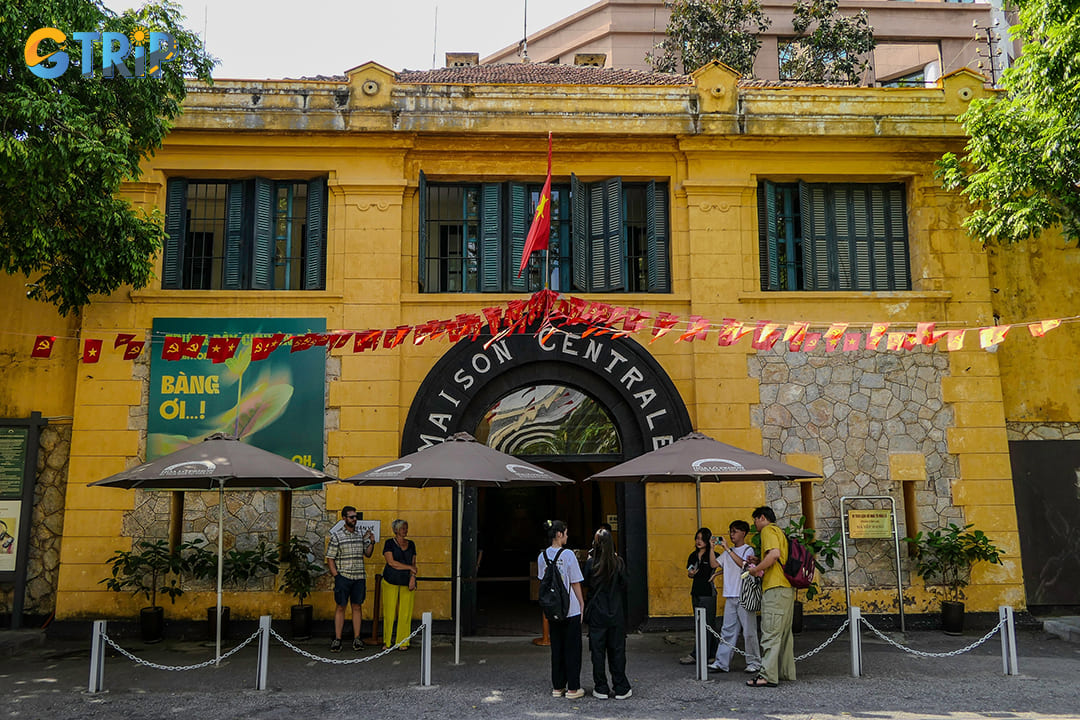
As a historical and solemn site, it is recommended to wear modest and respectful clothing
FAQs when visiting Hoa Lo Prison
1. Is photography allowed inside Hoa Lo Prison?
Yes, tourists are generally permitted to take photographs within Hoa Lo Prison. However, certain areas, such as the execution chamber and dark dungeons, may have restrictions on photography. It's advisable to observe posted signs and consult museum staff regarding specific guidelines. Additionally, while photography is allowed in most areas, using flash is discouraged to preserve the artifacts.
2. Can I buy souvenirs or memorabilia at the museum?
Yes, Hoa Lo Prison features a gift shop where you can purchase a variety of souvenirs and memorabilia related to the site's history. Available items include books detailing the prison's past, replicas of historical artifacts, postcards, and traditional Vietnamese crafts. These products serve as meaningful keepsakes and help support the preservation of the museum.
3. How long does it take to explore the entire museum?
The duration of a visit to Hoa Lo Prison can vary based on individual interest levels. On average, people spend approximately 1 to 1.5 hours touring the museum. This timeframe allows for a comprehensive exploration of the exhibits, including the original cells, informative displays, and historical artifacts. For those who wish to delve deeper into the history and read all informational plaques, allocating up to 2 hours may be more appropriate.
4. Is Hoa Lo Prison featured in any popular films or documentaries?
Yes, Hoa Lo Prison has been the subject of various documentaries and films that examine Vietnam's history and the Vietnam War era such as Haunted Hoa Lo, and The Hanoi Hilton. Notably, the prison is often referenced in discussions about American prisoners of war and has been featured in media exploring their experiences during captivity. Additionally, exhibitions at the prison have showcased artworks and photographs depicting life within its walls. For example, the paintings by Air Force Lieutenant Colonel Hervey Studdiford Stockman illustrate the conditions and events experienced by American POWs during their imprisonment.
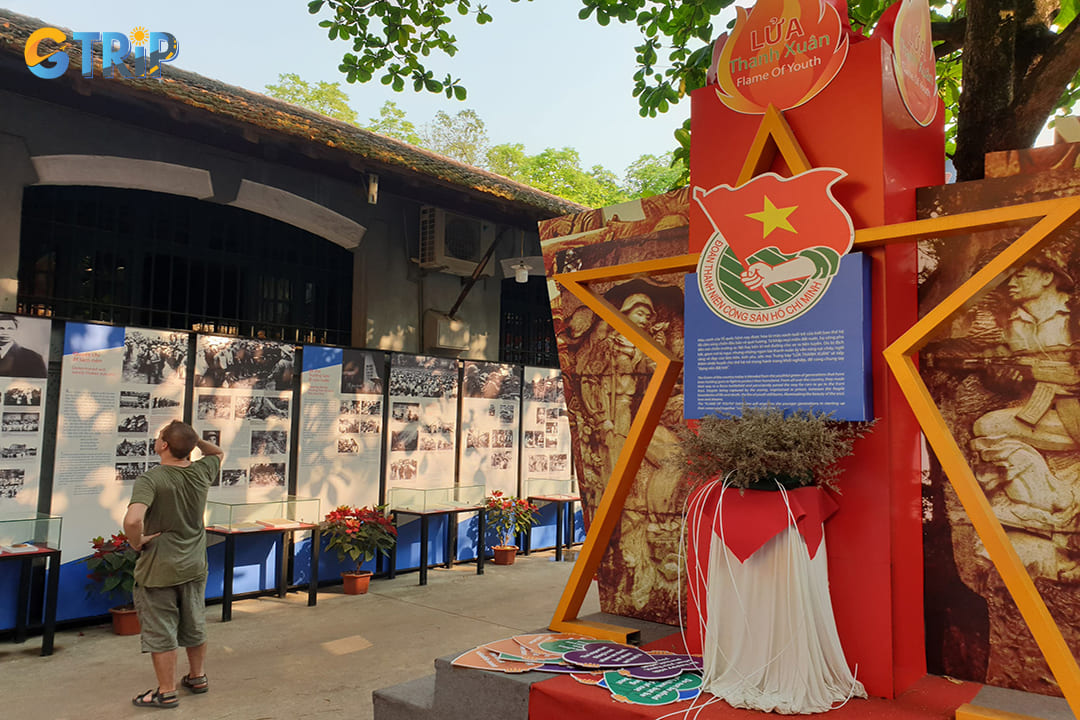
On average, people spend approximately 1 to 1.5 hours touring the museum
Hoa Lo Prison offers a powerful glimpse into Vietnam's struggle for independence and the harsh realities of war. Through this exploration, readers gain a deeper understanding of the resilience, sacrifice, and patriotism of those who lived through these challenging times. This article equips you with valuable knowledge to enrich your experience. To deepen your understanding or to plan a guided tour for an immersive experience, consider exploring the services offered by GTrip - Vietnam Travel Agency. We are your trusted companion for discovering Vietnam's historical and cultural treasures.

